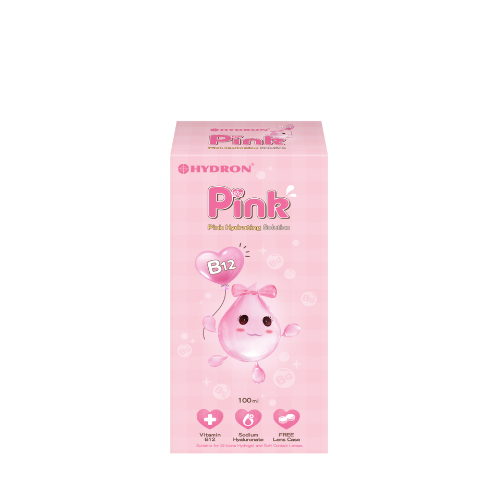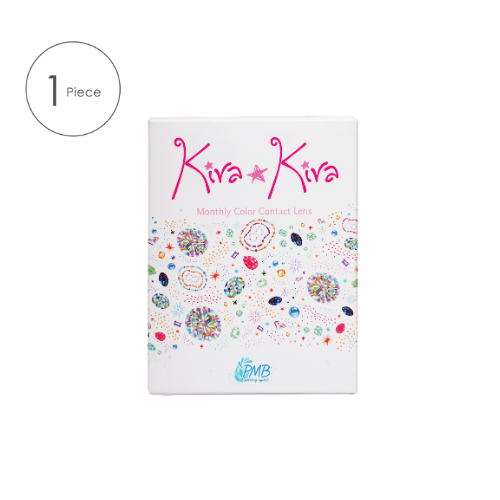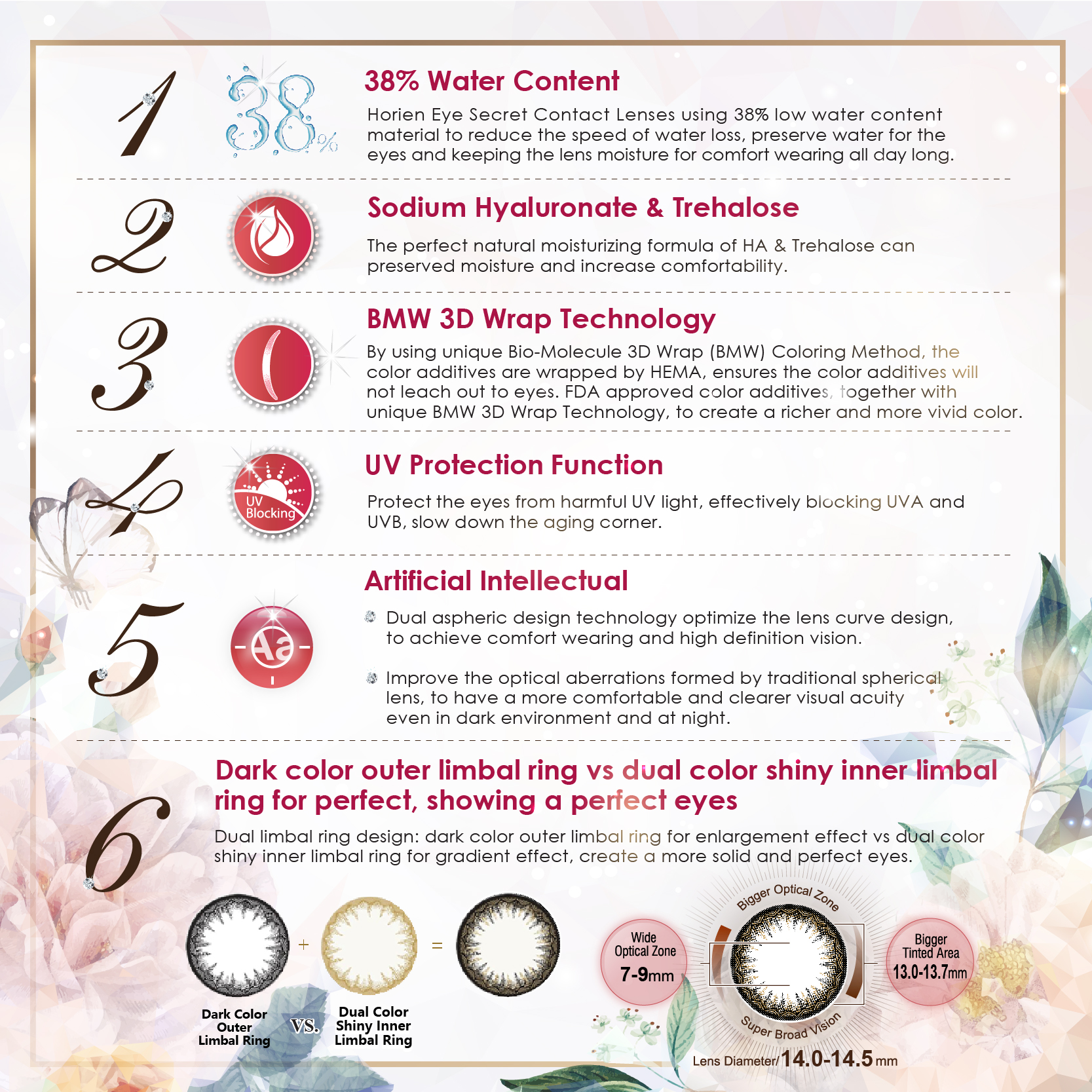PRODUCTS
Showing 1–12 of 18 results
-
Horien Eye Secret Plus 15pcs / box

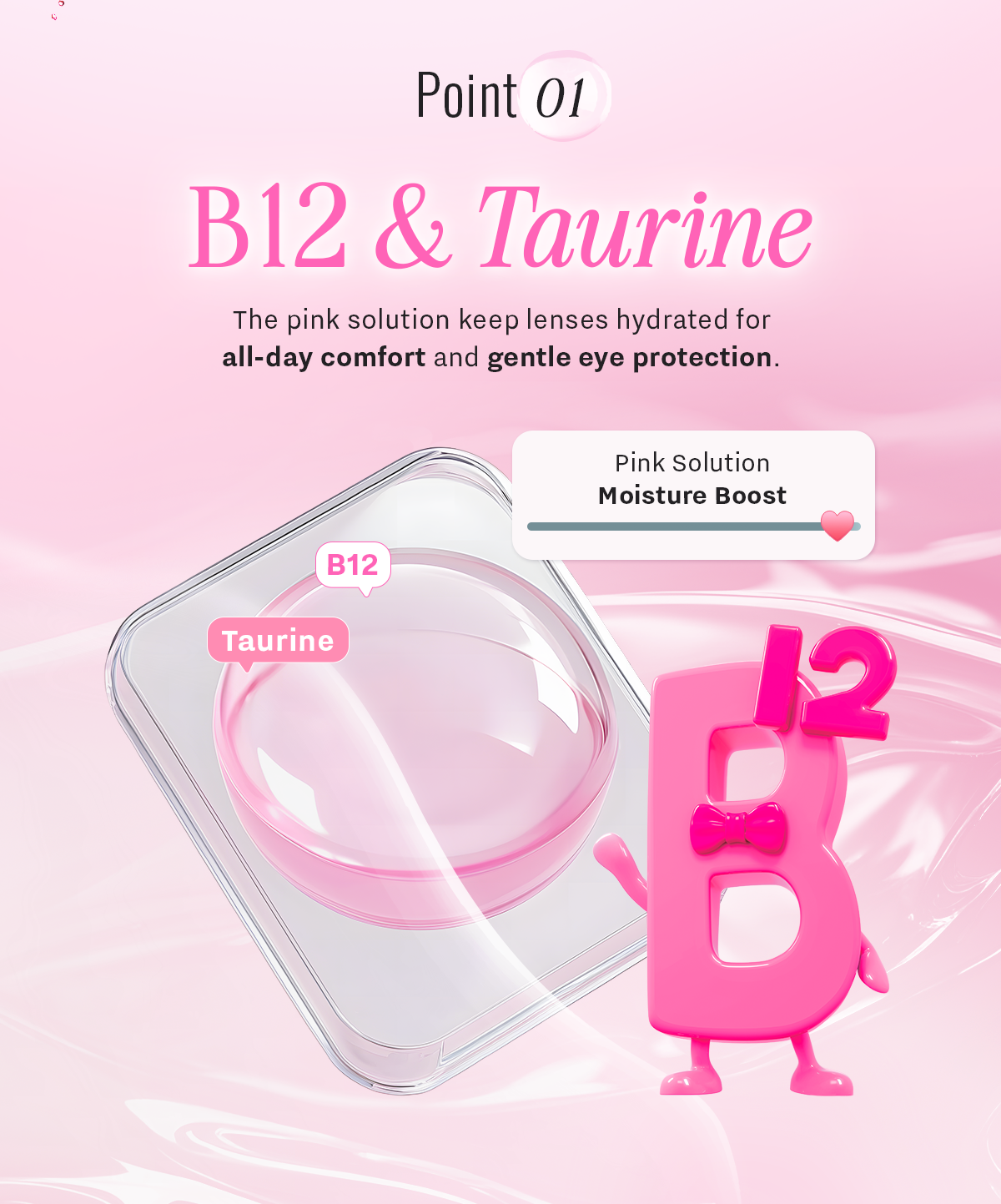


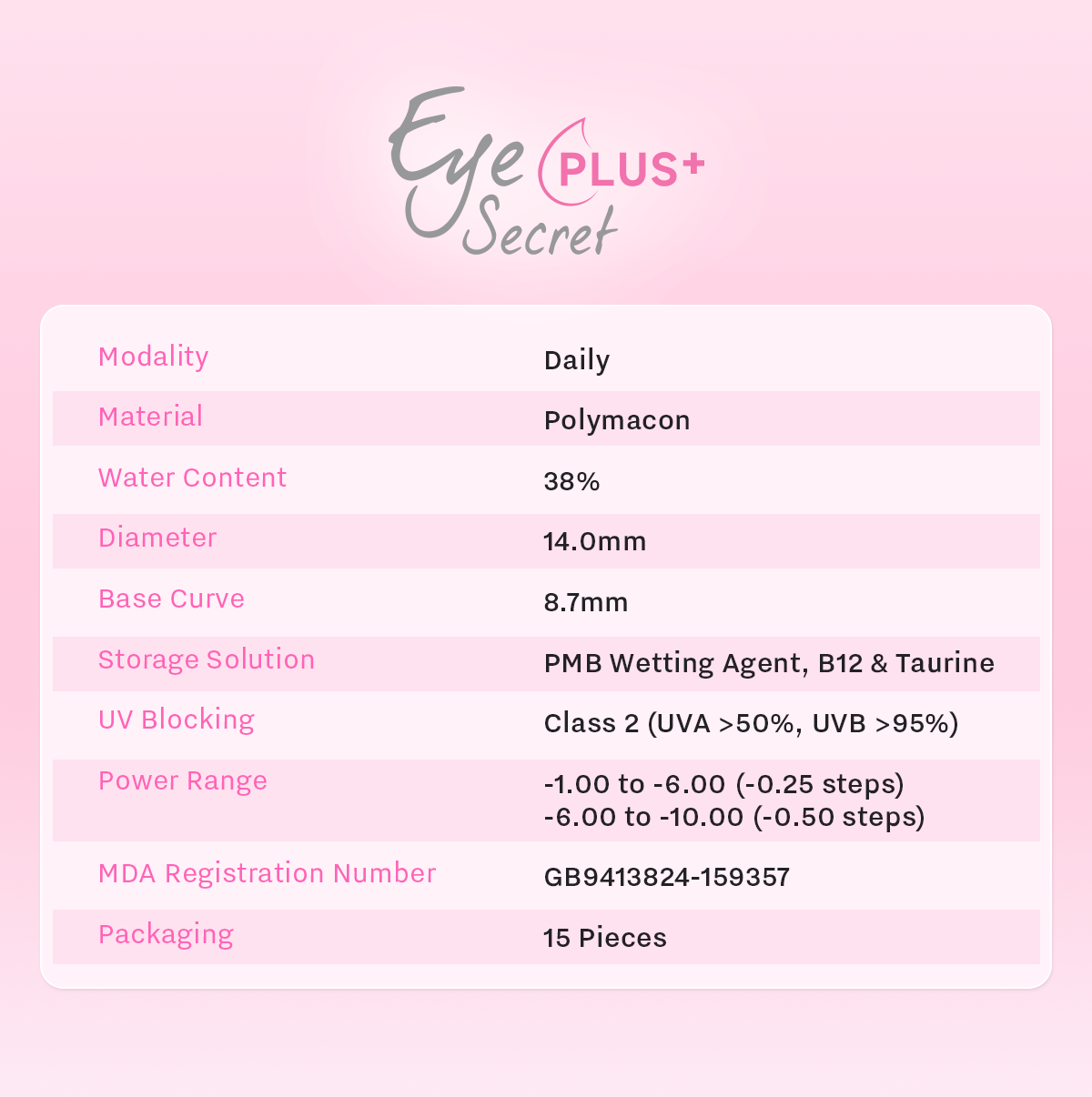
Instruction of Use
To condition, wear and remove lenses, complete these following steps.
Wearing Contact Lens
Step 1: Thoroughly wash and dry your hands with soap and a clean towel.
Step 2: Rinse your lens with solution to remove any trace of debris. l Tip: To avoid mixing up your lenses, always apply and remove the lens for your RIGHT eye first.
Step 3: Place the lens on the top of your index finger. Be sure the lens is correctly oriented by checking the inside-out marker.
Step 4: Use your other hand to hold your upper eyelid so you won’t blink.
Step 5: Pull down your lower eyelid with the other fingers of your applying hand.
Step 6: Look up at the ceiling and gently place the lens on the lower part of your eye.
Step 7: Slowly release your eyelid and close your eye for a moment.
Step 8: Blink several times to center the lens. You’re all set.
Step 9: If your lens feels uncomfortable, remove it and inspect for damage or debris. If it’s damaged, discard it. Otherwise, rinse with more solution and reapply.
Removing Contact Lens
Step 1: Thoroughly wash and dry your hands with soap and a clean towel.
Step 2: Look up at the ceiling and pull down your lower eye lid. l Tip: To avoid mixing up your lenses, always apply (and remove) them in the same order.
Step 3: Bring your index finger close to your eye until you touch the lower edge of the lens.
Step 4: Slide the lens down to the lower white part of your eye.
Step 5: Gently squeeze the lens between your thumb and index finger and remove it.
Step 6: Remove the other lens following the same procedure.
Contraindications (reasons not to use)
Do not use the lens when any of the following conditions exist:
- Acute and subacute inflammation or infection of the anterior chamber of the eye.
- Any eye disease, injury, or abnormality that affects the cornea, conjunctiva, or eyelids.
- Severe insufficiency of lacrimal secretion (dry eyes). l Corneal hypoesthesia (reduced corneal sensitivity), if not aphakic.
- Any systemic disease that may affect the eye or be exaggerated by wearing contact lenses. l Allergic reactions of ocular surfaces or adnexa that may be induced or exaggerated by wearing contact lenses or use of contact lens solutions.
- Allergy to any ingredient, such as mercury or thimerosal, in a solution, which is to be used to care for any lens.
- Any active corneal infection (bacterial, fungal, or viral). If eyes become red or irritated.
WarningsPatients should be advised of the following warnings pertaining to contact lens wear:
- Problems with contact lenses and lens care products could result in serious injury to the eye. It is essential that patients follow their eye care professional’s directions and all labelling instructions for proper use of lenses and lens care products, including the lens case.
- Eye problems, including corneal ulcers can develop rapidly and lead to loss of vision. The risk of ulcerative keratitis has been shown to be greater among users of extended wear contact lenses than among users of daily wear contact lenses. The risk increases with the number of consecutive days that the lenses are worn between removals, even with the first overnight use.
- Daily wear lenses are not indicated for overnight wear and patients should be instructed not to wear lenses while sleeping.
- Studies have shown that contact lens wearers who are smokers have a higher incidence of adverse reactions than nonsmokers.
- If a patient experiences eye discomfort, excessive tearing, vision changes, or redness of the eye, the patient should be instructed to immediately remove the lenses and promptly contact his or her eye care professional.
PrecautionsSpecial Precautions for Eye Care Practitioners
- The eye care practitioner should consider all characteristics of the lens that can affect lens performance and ocular health, including oxygen permeability, wettability, central and peripheral thickness, and optic zone diameter.
- The potential impact of these factors on the patient’s ocular health should be carefully weighed against the patient’s need for refractive correction; therefore, the continuing ocular health of the patient and lens performance on the eye should be carefully monitored by the prescribing eye care practitioner.
- Aphakic patients should not be fitted with any contact lenses until the determination is made that the eye has healed completely.
- Fluorescein, a yellow dye, should not be used while the lenses are on the eyes. The lenses absorb the dye and become discolored. Whenever fluorescein is used in the eyes, the eyes should be flushed with a sterile saline solution that is recommended for in-eye use.
- Before leaving the eye care practitioner’s office, the patient should be able to promptly remove the lenses or should have someone else available who can remove the lenses for him or her. Eye care practitioners should instruct the patient to remove the lenses immediately if the eye becomes red or irritated.
-
Hydron Eye Secret Silicone Hydrogel Monthly Contact Lens 1pc / box




Instruction of Use
To condition, wear and remove lenses, complete these following steps.
Wearing Contact Lens
Step 1: Thoroughly wash and dry your hands with soap and a clean towel.
Step 2: Rinse your lens with solution to remove any trace of debris. l Tip: To avoid mixing up your lenses, always apply and remove the lens for your RIGHT eye first.
Step 3: Place the lens on the top of your index finger. Be sure the lens is correctly oriented by checking the inside-out marker.
Step 4: Use your other hand to hold your upper eyelid so you won’t blink.
Step 5: Pull down your lower eyelid with the other fingers of your applying hand.
Step 6: Look up at the ceiling and gently place the lens on the lower part of your eye.
Step 7: Slowly release your eyelid and close your eye for a moment.
Step 8: Blink several times to center the lens. You’re all set.
Step 9: If your lens feels uncomfortable, remove it and inspect for damage or debris. If it’s damaged, discard it. Otherwise, rinse with more solution and reapply.
Removing Contact Lens
Step 1: Thoroughly wash and dry your hands with soap and a clean towel.
Step 2: Look up at the ceiling and pull down your lower eye lid. l Tip: To avoid mixing up your lenses, always apply (and remove) them in the same order.
Step 3: Bring your index finger close to your eye until you touch the lower edge of the lens.
Step 4: Slide the lens down to the lower white part of your eye.
Step 5: Gently squeeze the lens between your thumb and index finger and remove it.
Step 6: Remove the other lens following the same procedure.
Contraindications (reasons not to use)
Do not use the lens when any of the following conditions exist:
- Acute and subacute inflammation or infection of the anterior chamber of the eye.
- Any eye disease, injury, or abnormality that affects the cornea, conjunctiva, or eyelids.
- Severe insufficiency of lacrimal secretion (dry eyes). l Corneal hypoesthesia (reduced corneal sensitivity), if not aphakic.
- Any systemic disease that may affect the eye or be exaggerated by wearing contact lenses. l Allergic reactions of ocular surfaces or adnexa that may be induced or exaggerated by wearing contact lenses or use of contact lens solutions.
- Allergy to any ingredient, such as mercury or thimerosal, in a solution, which is to be used to care for any lens.
- Any active corneal infection (bacterial, fungal, or viral). If eyes become red or irritated.
WarningsPatients should be advised of the following warnings pertaining to contact lens wear:
- Problems with contact lenses and lens care products could result in serious injury to the eye. It is essential that patients follow their eye care professional’s directions and all labelling instructions for proper use of lenses and lens care products, including the lens case.
- Eye problems, including corneal ulcers can develop rapidly and lead to loss of vision. The risk of ulcerative keratitis has been shown to be greater among users of extended wear contact lenses than among users of daily wear contact lenses. The risk increases with the number of consecutive days that the lenses are worn between removals, even with the first overnight use.
- Daily wear lenses are not indicated for overnight wear and patients should be instructed not to wear lenses while sleeping.
- Studies have shown that contact lens wearers who are smokers have a higher incidence of adverse reactions than nonsmokers.
- If a patient experiences eye discomfort, excessive tearing, vision changes, or redness of the eye, the patient should be instructed to immediately remove the lenses and promptly contact his or her eye care professional.
PrecautionsSpecial Precautions for Eye Care Practitioners
- The eye care practitioner should consider all characteristics of the lens that can affect lens performance and ocular health, including oxygen permeability, wettability, central and peripheral thickness, and optic zone diameter.
- The potential impact of these factors on the patient’s ocular health should be carefully weighed against the patient’s need for refractive correction; therefore, the continuing ocular health of the patient and lens performance on the eye should be carefully monitored by the prescribing eye care practitioner.
- Aphakic patients should not be fitted with any contact lenses until the determination is made that the eye has healed completely.
- Fluorescein, a yellow dye, should not be used while the lenses are on the eyes. The lenses absorb the dye and become discolored. Whenever fluorescein is used in the eyes, the eyes should be flushed with a sterile saline solution that is recommended for in-eye use.
- Before leaving the eye care practitioner’s office, the patient should be able to promptly remove the lenses or should have someone else available who can remove the lenses for him or her. Eye care practitioners should instruct the patient to remove the lenses immediately if the eye becomes red or irritated.
-
Hydron Pink Hydrating Solution – 100ml


Intended Uses and Indications in Labeling
The contact lens solutions is used in the daily cleaning, removing protein deposits, rinsing, chemical (not heat) disinfection and storage of soft (hydrophilic) contact lenses (including silicone hydrogel lenses) as recommend by eye professional practitioner.
Instruction of Use
- Wash hands thoroughly.
- Add a sufficient amount of Contact Lens Solution to the lens case so that when the lenses are placed in the case, they are totally submerged in the liquid.
- Remove one contact lens, place it in the palm of the hand, add various drops of Contact Lens Solution and with your index finger carefully rub in a linear direction.
- Rinse the contact lens with abundant Contact Lens Solution to completely eliminate residues.
- Repeat the process with the other contact lens.
- Place the lenses in the case, in their corresponding holders and leave all night or for at least six hours. If desired, the contact lenses can be rinsed in Contact Lens Solution before replacing them in your eyes.
Contraindications (reasons not to use)If users are allergic to any ingredient in the solutions ,please do not use this product.
*Warnings*
PROBLEM WITH CONTACT LENS AND LENS CARE PRODUCTS COULD RESULT IN CORNEAL INFECTION AND/OR UCLER AND LEAD TO LOSS OF VISION. It is essential that you follow your eye care practitioner’s directions and all labeling instructions for proper use of lenses and lens care products, including the lens case.
Eye problems, including corneal ulcers, can develop rapidly and lead to loss of vision. Daily wear lenses are not indicated for overnight wear and should not be worn while sleeping. Clinical studies have shown the risk of serious adverse reactions is increased when these lenses are worn overnight. Extended wear lenses should be regularly removed for cleaning and disinfection or for disposal and replacement on the schedule prescribed by your eye care professional. Clinical studies have shown that there is an increased incidence of serious adverse reactions in extended wear contact lens users as compared to daily wear contact lens users. Studies have also shown that the risk of serious adverse reactions increases the longer extended wear lenses are worn before removal for cleaning and disinfection or for disposal and replacement. Studies have also shown that smokers have a higher incidence of adverse reactions. If you experience eye discomfort, excessive tearing, vision changes, redness of the eye, immediately remove your lenses and promptly contact your eye care professional. It is recommended that contact lens wearers see their eye care professional twice each year, or if directed, more frequently.
You should follow the complete recommended lens rubbing and rinsing times in the product labeling to adequately disinfect your lenses and reduce the risk of contact lens contamination. Reduced rubbing or rinsing time may not adequately clean your lenses.
You should fill your lens case with fresh solution every time you store your lenses and never “top-off” or re-use solution. You should discard your solution immediately after your lenses have been removed from the lens case. You should not expose or store your lenses in or rinse your lens case with any water, such as tap, bottled or distilled, or with any non-sterile solution.
Clean, rinse and air-dry your lens case each time you remove your lenses. In order to permit excess solution to drain, you can flip over your lens case while air drying. Replace your lens case frequently, depending upon your hygiene habits.
Failure to discard solution from lens case after each use or use of water to care for your lenses may lead to contamination resulting in eye injury and potential loss of vision. See accompanying instructions for additional important safety information.
- To avoid contamination, DO NOT touch tip of containers to any surface. Replace cap after using.
- To avoid contaminating your solution, DO NOT transfer to other bottles or containers.
- Always follow the product directions for use. Failure to follow product directions may lead to vision loss.
- Visit your eye care practitioner regularly.
- Always wash and dry hands before handling lenses. l DO NOT use tap water, bottled water or saliva with lenses or lens case. Only use fresh solution to clean and disinfect contact lenses. Always discard any remaining solution in your lens case after each disinfection cycle. Saline or rewetting drops will not disinfect your lenses.
- Always replace your solutions, lenses and lens case as directed. l To avoid contamination, do not touch tip of container to any surface. Replace cap after using. l DO NOT use with heat (thermal) disinfecting unless specifically indicated in labeling.
Precautions
- Always discard solution from lens case after each use.
- Keep the bottle tightly closed when not in use.
- Store solution at room temperature.
- Use before the expiration date marked on the carton and bottle.
- Discard any remaining solution 90 days after opening.
- Keep out of reach of children.
-
Hydron Pink Hydrating Solution – 360ml

Intended Uses and Indications in Labeling
The contact lens solutions is used in the daily cleaning, removing protein deposits, rinsing, chemical (not heat) disinfection and storage of soft (hydrophilic) contact lenses (including silicone hydrogel lenses) as recommend by eye professional practitioner.
Instruction of Use
- Wash hands thoroughly.
- Add a sufficient amount of Contact Lens Solution to the lens case so that when the lenses are placed in the case, they are totally submerged in the liquid.
- Remove one contact lens, place it in the palm of the hand, add various drops of Contact Lens Solution and with your index finger carefully rub in a linear direction.
- Rinse the contact lens with abundant Contact Lens Solution to completely eliminate residues.
- Repeat the process with the other contact lens.
- Place the lenses in the case, in their corresponding holders and leave all night or for at least six hours. If desired, the contact lenses can be rinsed in Contact Lens Solution before replacing them in your eyes.
Contraindications (reasons not to use)If users are allergic to any ingredient in the solutions ,please do not use this product.
*Warnings*
PROBLEM WITH CONTACT LENS AND LENS CARE PRODUCTS COULD RESULT IN CORNEAL INFECTION AND/OR UCLER AND LEAD TO LOSS OF VISION. It is essential that you follow your eye care practitioner’s directions and all labeling instructions for proper use of lenses and lens care products, including the lens case.
Eye problems, including corneal ulcers, can develop rapidly and lead to loss of vision. Daily wear lenses are not indicated for overnight wear and should not be worn while sleeping. Clinical studies have shown the risk of serious adverse reactions is increased when these lenses are worn overnight. Extended wear lenses should be regularly removed for cleaning and disinfection or for disposal and replacement on the schedule prescribed by your eye care professional. Clinical studies have shown that there is an increased incidence of serious adverse reactions in extended wear contact lens users as compared to daily wear contact lens users. Studies have also shown that the risk of serious adverse reactions increases the longer extended wear lenses are worn before removal for cleaning and disinfection or for disposal and replacement. Studies have also shown that smokers have a higher incidence of adverse reactions. If you experience eye discomfort, excessive tearing, vision changes, redness of the eye, immediately remove your lenses and promptly contact your eye care professional. It is recommended that contact lens wearers see their eye care professional twice each year, or if directed, more frequently.
You should follow the complete recommended lens rubbing and rinsing times in the product labeling to adequately disinfect your lenses and reduce the risk of contact lens contamination. Reduced rubbing or rinsing time may not adequately clean your lenses.
You should fill your lens case with fresh solution every time you store your lenses and never “top-off” or re-use solution. You should discard your solution immediately after your lenses have been removed from the lens case. You should not expose or store your lenses in or rinse your lens case with any water, such as tap, bottled or distilled, or with any non-sterile solution.
Clean, rinse and air-dry your lens case each time you remove your lenses. In order to permit excess solution to drain, you can flip over your lens case while air drying. Replace your lens case frequently, depending upon your hygiene habits.
Failure to discard solution from lens case after each use or use of water to care for your lenses may lead to contamination resulting in eye injury and potential loss of vision. See accompanying instructions for additional important safety information.
- To avoid contamination, DO NOT touch tip of containers to any surface. Replace cap after using.
- To avoid contaminating your solution, DO NOT transfer to other bottles or containers.
- Always follow the product directions for use. Failure to follow product directions may lead to vision loss.
- Visit your eye care practitioner regularly.
- Always wash and dry hands before handling lenses. l DO NOT use tap water, bottled water or saliva with lenses or lens case. Only use fresh solution to clean and disinfect contact lenses. Always discard any remaining solution in your lens case after each disinfection cycle. Saline or rewetting drops will not disinfect your lenses.
- Always replace your solutions, lenses and lens case as directed. l To avoid contamination, do not touch tip of container to any surface. Replace cap after using. l DO NOT use with heat (thermal) disinfecting unless specifically indicated in labeling.
Precautions
- Always discard solution from lens case after each use.
- Keep the bottle tightly closed when not in use.
- Store solution at room temperature.
- Use before the expiration date marked on the carton and bottle.
- Discard any remaining solution 90 days after opening.
- Keep out of reach of children.
-
Hydron Pure Plus Silicone Hydrogel 1Day Color Contact Lens 10pcs / box
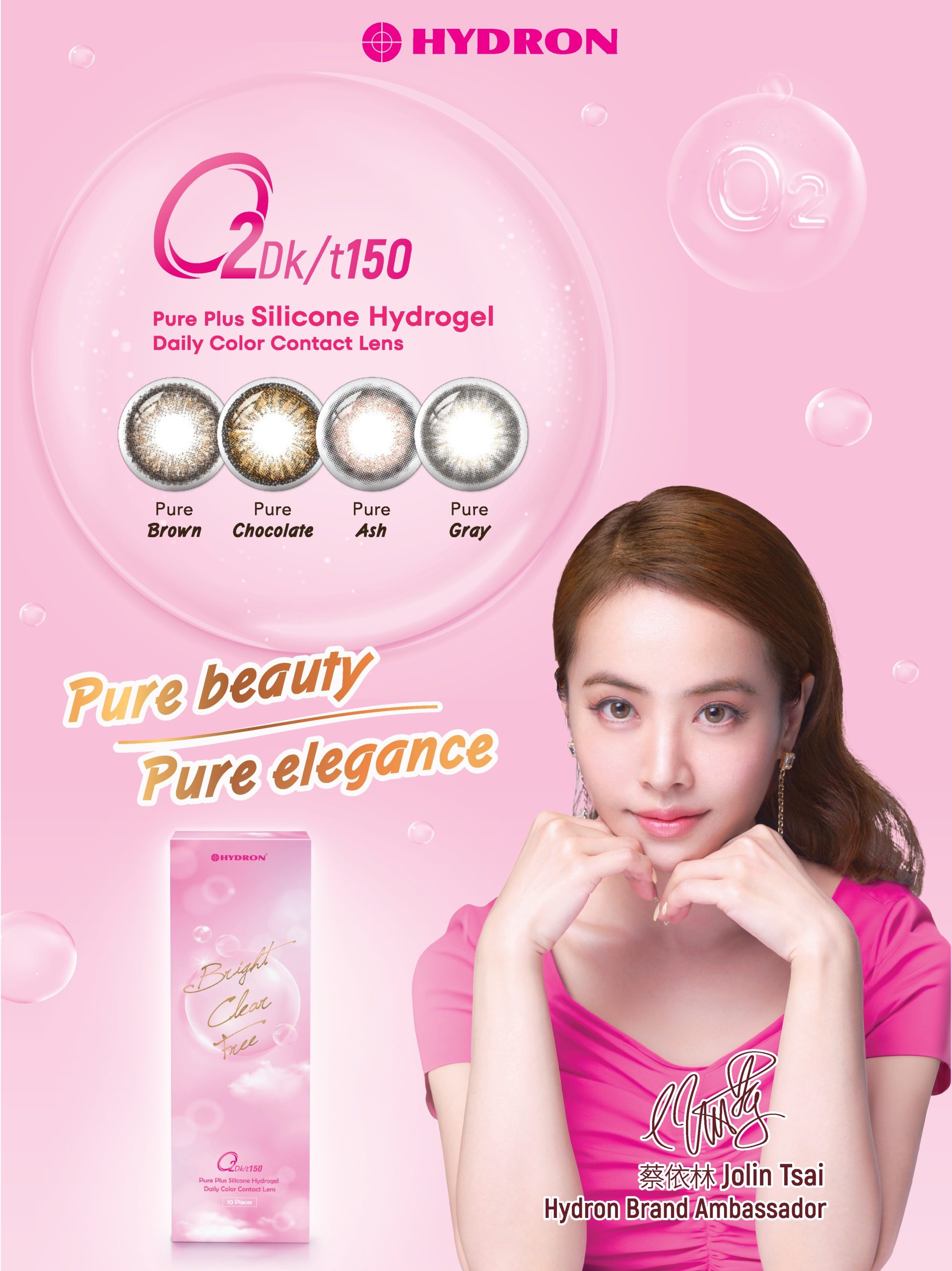
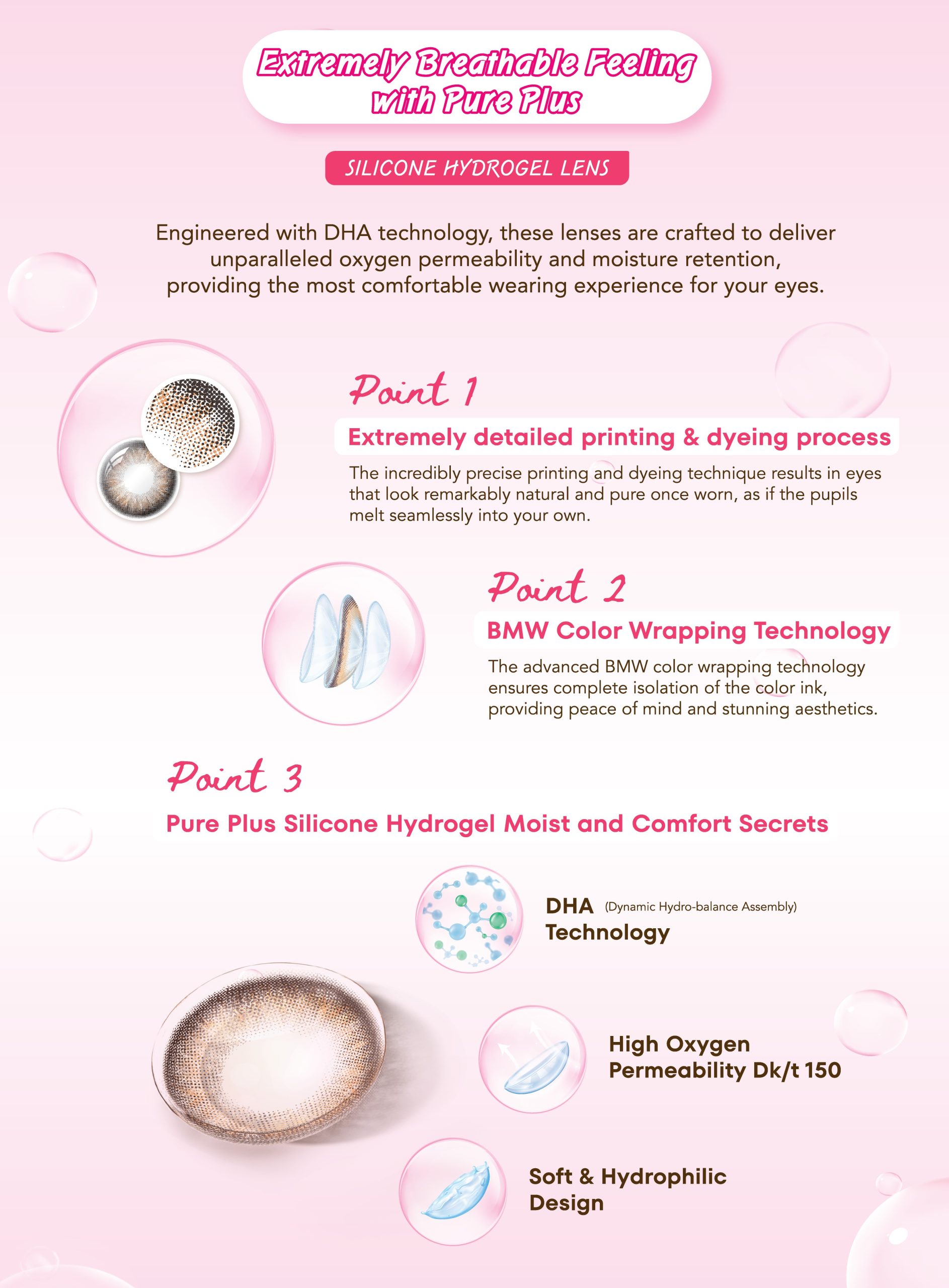

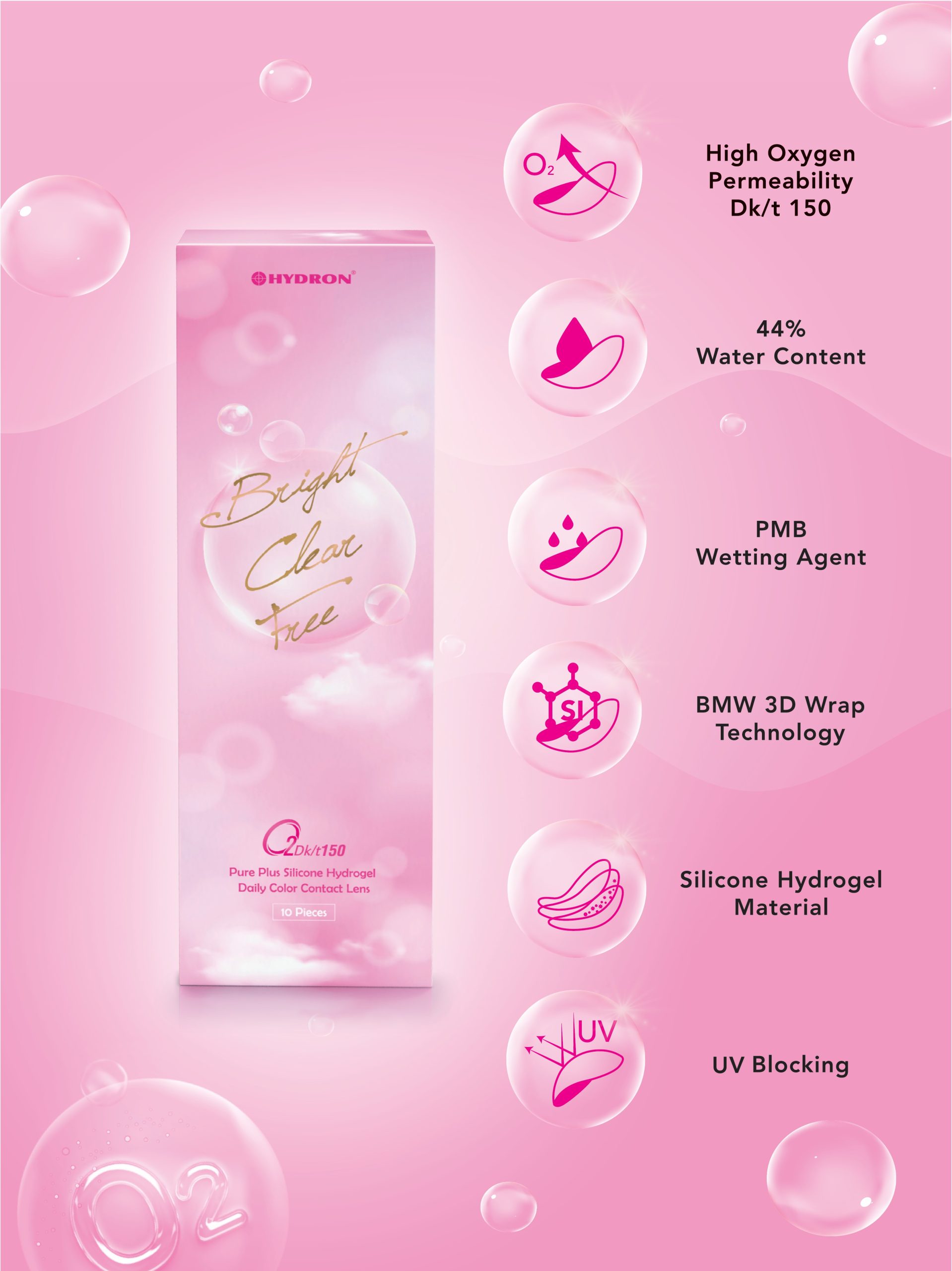
Instruction of Use
To condition, wear and remove lenses, complete these following steps.
Wearing Contact Lens
Step 1: Thoroughly wash and dry your hands with soap and a clean towel.
Step 2: Rinse your lens with solution to remove any trace of debris. l Tip: To avoid mixing up your lenses, always apply and remove the lens for your RIGHT eye first.
Step 3: Place the lens on the top of your index finger. Be sure the lens is correctly oriented by checking the inside-out marker.
Step 4: Use your other hand to hold your upper eyelid so you won’t blink.
Step 5: Pull down your lower eyelid with the other fingers of your applying hand.
Step 6: Look up at the ceiling and gently place the lens on the lower part of your eye.
Step 7: Slowly release your eyelid and close your eye for a moment.
Step 8: Blink several times to center the lens. You’re all set.
Step 9: If your lens feels uncomfortable, remove it and inspect for damage or debris. If it’s damaged, discard it. Otherwise, rinse with more solution and reapply.
Removing Contact Lens
Step 1: Thoroughly wash and dry your hands with soap and a clean towel.
Step 2: Look up at the ceiling and pull down your lower eye lid. l Tip: To avoid mixing up your lenses, always apply (and remove) them in the same order.
Step 3: Bring your index finger close to your eye until you touch the lower edge of the lens.
Step 4: Slide the lens down to the lower white part of your eye.
Step 5: Gently squeeze the lens between your thumb and index finger and remove it.
Step 6: Remove the other lens following the same procedure.
Contraindications (reasons not to use)
Do not use the lens when any of the following conditions exist:
- Acute and subacute inflammation or infection of the anterior chamber of the eye.
- Any eye disease, injury, or abnormality that affects the cornea, conjunctiva, or eyelids.
- Severe insufficiency of lacrimal secretion (dry eyes). l Corneal hypoesthesia (reduced corneal sensitivity), if not aphakic.
- Any systemic disease that may affect the eye or be exaggerated by wearing contact lenses. l Allergic reactions of ocular surfaces or adnexa that may be induced or exaggerated by wearing contact lenses or use of contact lens solutions.
- Allergy to any ingredient, such as mercury or thimerosal, in a solution, which is to be used to care for any lens.
- Any active corneal infection (bacterial, fungal, or viral). If eyes become red or irritated.
WarningsPatients should be advised of the following warnings pertaining to contact lens wear:
- Problems with contact lenses and lens care products could result in serious injury to the eye. It is essential that patients follow their eye care professional’s directions and all labelling instructions for proper use of lenses and lens care products, including the lens case.
- Eye problems, including corneal ulcers can develop rapidly and lead to loss of vision. The risk of ulcerative keratitis has been shown to be greater among users of extended wear contact lenses than among users of daily wear contact lenses. The risk increases with the number of consecutive days that the lenses are worn between removals, even with the first overnight use.
- Daily wear lenses are not indicated for overnight wear and patients should be instructed not to wear lenses while sleeping.
- Studies have shown that contact lens wearers who are smokers have a higher incidence of adverse reactions than nonsmokers.
- If a patient experiences eye discomfort, excessive tearing, vision changes, or redness of the eye, the patient should be instructed to immediately remove the lenses and promptly contact his or her eye care professional.
PrecautionsSpecial Precautions for Eye Care Practitioners
- The eye care practitioner should consider all characteristics of the lens that can affect lens performance and ocular health, including oxygen permeability, wettability, central and peripheral thickness, and optic zone diameter.
- The potential impact of these factors on the patient’s ocular health should be carefully weighed against the patient’s need for refractive correction; therefore, the continuing ocular health of the patient and lens performance on the eye should be carefully monitored by the prescribing eye care practitioner.
- Aphakic patients should not be fitted with any contact lenses until the determination is made that the eye has healed completely.
- Fluorescein, a yellow dye, should not be used while the lenses are on the eyes. The lenses absorb the dye and become discolored. Whenever fluorescein is used in the eyes, the eyes should be flushed with a sterile saline solution that is recommended for in-eye use.
- Before leaving the eye care practitioner’s office, the patient should be able to promptly remove the lenses or should have someone else available who can remove the lenses for him or her. Eye care practitioners should instruct the patient to remove the lenses immediately if the eye becomes red or irritated.
-
Hydron StarShine 1Day Color Contact Lens 10pcs / box


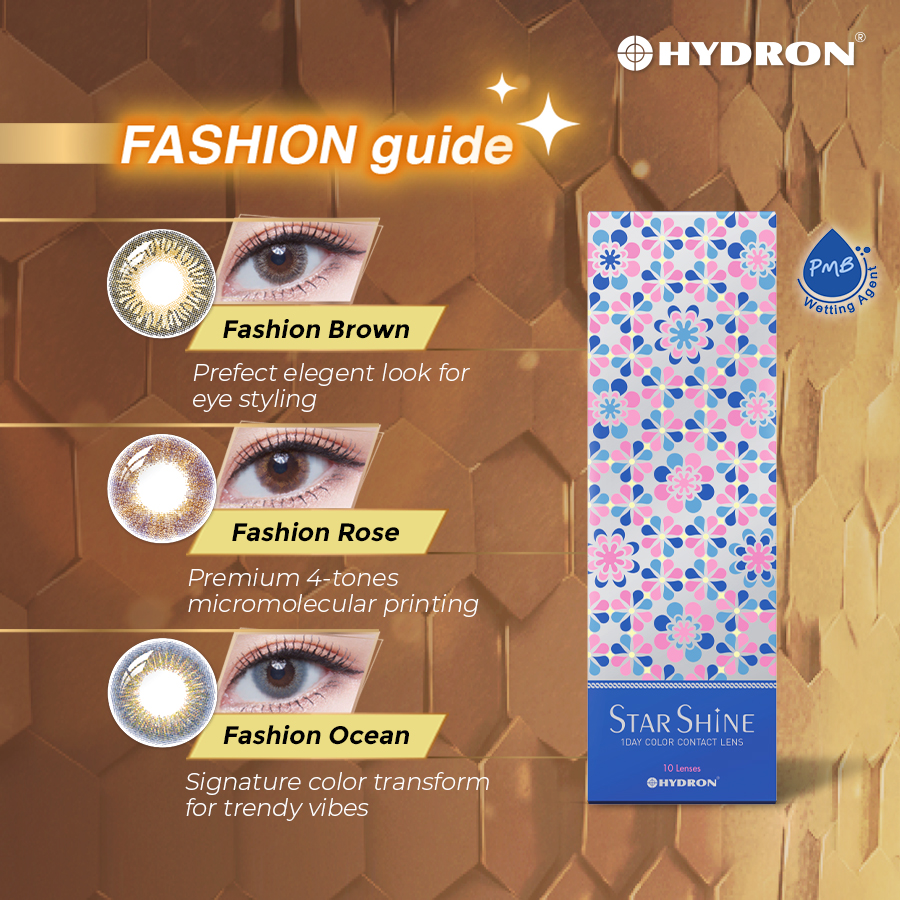


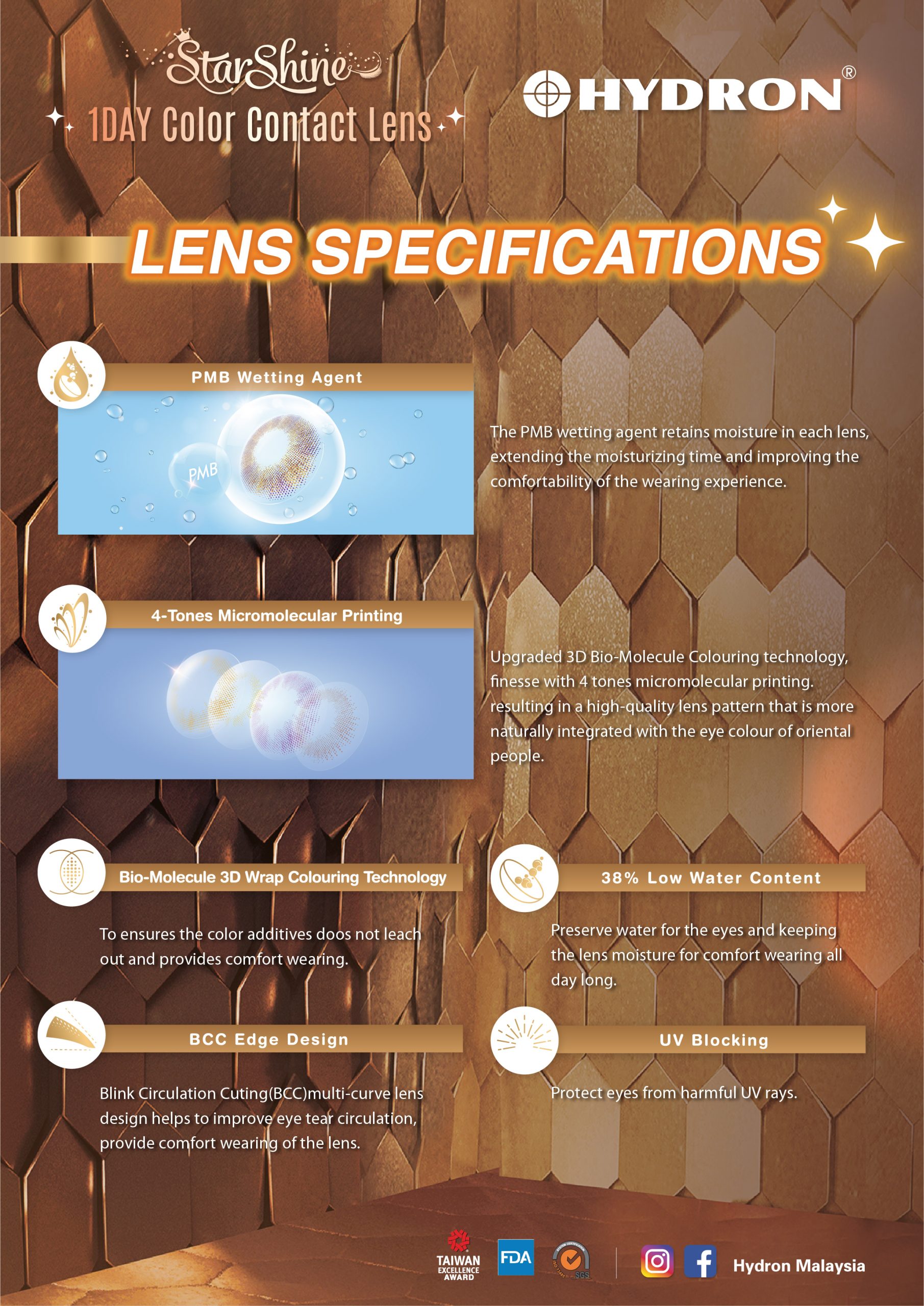
Instruction of Use
To condition, wear and remove lenses, complete these following steps.
Wearing Contact Lens
Step 1: Thoroughly wash and dry your hands with soap and a clean towel.
Step 2: Rinse your lens with solution to remove any trace of debris. l Tip: To avoid mixing up your lenses, always apply and remove the lens for your RIGHT eye first.
Step 3: Place the lens on the top of your index finger. Be sure the lens is correctly oriented by checking the inside-out marker.
Step 4: Use your other hand to hold your upper eyelid so you won’t blink.
Step 5: Pull down your lower eyelid with the other fingers of your applying hand.
Step 6: Look up at the ceiling and gently place the lens on the lower part of your eye.
Step 7: Slowly release your eyelid and close your eye for a moment.
Step 8: Blink several times to center the lens. You’re all set.
Step 9: If your lens feels uncomfortable, remove it and inspect for damage or debris. If it’s damaged, discard it. Otherwise, rinse with more solution and reapply.
Removing Contact Lens
Step 1: Thoroughly wash and dry your hands with soap and a clean towel.
Step 2: Look up at the ceiling and pull down your lower eye lid. l Tip: To avoid mixing up your lenses, always apply (and remove) them in the same order.
Step 3: Bring your index finger close to your eye until you touch the lower edge of the lens.
Step 4: Slide the lens down to the lower white part of your eye.
Step 5: Gently squeeze the lens between your thumb and index finger and remove it.
Step 6: Remove the other lens following the same procedure.
Contraindications (reasons not to use)
Do not use the lens when any of the following conditions exist:
- Acute and subacute inflammation or infection of the anterior chamber of the eye.
- Any eye disease, injury, or abnormality that affects the cornea, conjunctiva, or eyelids.
- Severe insufficiency of lacrimal secretion (dry eyes). l Corneal hypoesthesia (reduced corneal sensitivity), if not aphakic.
- Any systemic disease that may affect the eye or be exaggerated by wearing contact lenses. l Allergic reactions of ocular surfaces or adnexa that may be induced or exaggerated by wearing contact lenses or use of contact lens solutions.
- Allergy to any ingredient, such as mercury or thimerosal, in a solution, which is to be used to care for any lens.
- Any active corneal infection (bacterial, fungal, or viral). If eyes become red or irritated.
WarningsPatients should be advised of the following warnings pertaining to contact lens wear:
- Problems with contact lenses and lens care products could result in serious injury to the eye. It is essential that patients follow their eye care professional’s directions and all labelling instructions for proper use of lenses and lens care products, including the lens case.
- Eye problems, including corneal ulcers can develop rapidly and lead to loss of vision. The risk of ulcerative keratitis has been shown to be greater among users of extended wear contact lenses than among users of daily wear contact lenses. The risk increases with the number of consecutive days that the lenses are worn between removals, even with the first overnight use.
- Daily wear lenses are not indicated for overnight wear and patients should be instructed not to wear lenses while sleeping.
- Studies have shown that contact lens wearers who are smokers have a higher incidence of adverse reactions than nonsmokers.
- If a patient experiences eye discomfort, excessive tearing, vision changes, or redness of the eye, the patient should be instructed to immediately remove the lenses and promptly contact his or her eye care professional.
PrecautionsSpecial Precautions for Eye Care Practitioners
- The eye care practitioner should consider all characteristics of the lens that can affect lens performance and ocular health, including oxygen permeability, wettability, central and peripheral thickness, and optic zone diameter.
- The potential impact of these factors on the patient’s ocular health should be carefully weighed against the patient’s need for refractive correction; therefore, the continuing ocular health of the patient and lens performance on the eye should be carefully monitored by the prescribing eye care practitioner.
- Aphakic patients should not be fitted with any contact lenses until the determination is made that the eye has healed completely.
- Fluorescein, a yellow dye, should not be used while the lenses are on the eyes. The lenses absorb the dye and become discolored. Whenever fluorescein is used in the eyes, the eyes should be flushed with a sterile saline solution that is recommended for in-eye use.
- Before leaving the eye care practitioner’s office, the patient should be able to promptly remove the lenses or should have someone else available who can remove the lenses for him or her. Eye care practitioners should instruct the patient to remove the lenses immediately if the eye becomes red or irritated.
-
Hydron x Hello Kitty Pink Hydrating Solution – LIMITED EDITION 100ml x2


Intended Uses and Indications in Labeling
The contact lens solutions is used in the daily cleaning, removing protein deposits, rinsing, chemical (not heat) disinfection and storage of soft (hydrophilic) contact lenses (including silicone hydrogel lenses) as recommend by eye professional practitioner.
Instruction of Use
- Wash hands thoroughly.
- Add a sufficient amount of Contact Lens Solution to the lens case so that when the lenses are placed in the case, they are totally submerged in the liquid.
- Remove one contact lens, place it in the palm of the hand, add various drops of Contact Lens Solution and with your index finger carefully rub in a linear direction.
- Rinse the contact lens with abundant Contact Lens Solution to completely eliminate residues.
- Repeat the process with the other contact lens.
- Place the lenses in the case, in their corresponding holders and leave all night or for at least six hours. If desired, the contact lenses can be rinsed in Contact Lens Solution before replacing them in your eyes.
Contraindications (reasons not to use)If users are allergic to any ingredient in the solutions ,please do not use this product.
*Warnings*
PROBLEM WITH CONTACT LENS AND LENS CARE PRODUCTS COULD RESULT IN CORNEAL INFECTION AND/OR UCLER AND LEAD TO LOSS OF VISION. It is essential that you follow your eye care practitioner’s directions and all labeling instructions for proper use of lenses and lens care products, including the lens case.
Eye problems, including corneal ulcers, can develop rapidly and lead to loss of vision. Daily wear lenses are not indicated for overnight wear and should not be worn while sleeping. Clinical studies have shown the risk of serious adverse reactions is increased when these lenses are worn overnight. Extended wear lenses should be regularly removed for cleaning and disinfection or for disposal and replacement on the schedule prescribed by your eye care professional. Clinical studies have shown that there is an increased incidence of serious adverse reactions in extended wear contact lens users as compared to daily wear contact lens users. Studies have also shown that the risk of serious adverse reactions increases the longer extended wear lenses are worn before removal for cleaning and disinfection or for disposal and replacement. Studies have also shown that smokers have a higher incidence of adverse reactions. If you experience eye discomfort, excessive tearing, vision changes, redness of the eye, immediately remove your lenses and promptly contact your eye care professional. It is recommended that contact lens wearers see their eye care professional twice each year, or if directed, more frequently.
You should follow the complete recommended lens rubbing and rinsing times in the product labeling to adequately disinfect your lenses and reduce the risk of contact lens contamination. Reduced rubbing or rinsing time may not adequately clean your lenses.
You should fill your lens case with fresh solution every time you store your lenses and never “top-off” or re-use solution. You should discard your solution immediately after your lenses have been removed from the lens case. You should not expose or store your lenses in or rinse your lens case with any water, such as tap, bottled or distilled, or with any non-sterile solution.
Clean, rinse and air-dry your lens case each time you remove your lenses. In order to permit excess solution to drain, you can flip over your lens case while air drying. Replace your lens case frequently, depending upon your hygiene habits.
Failure to discard solution from lens case after each use or use of water to care for your lenses may lead to contamination resulting in eye injury and potential loss of vision. See accompanying instructions for additional important safety information.
- To avoid contamination, DO NOT touch tip of containers to any surface. Replace cap after using.
- To avoid contaminating your solution, DO NOT transfer to other bottles or containers.
- Always follow the product directions for use. Failure to follow product directions may lead to vision loss.
- Visit your eye care practitioner regularly.
- Always wash and dry hands before handling lenses. l DO NOT use tap water, bottled water or saliva with lenses or lens case. Only use fresh solution to clean and disinfect contact lenses. Always discard any remaining solution in your lens case after each disinfection cycle. Saline or rewetting drops will not disinfect your lenses.
- Always replace your solutions, lenses and lens case as directed. l To avoid contamination, do not touch tip of container to any surface. Replace cap after using. l DO NOT use with heat (thermal) disinfecting unless specifically indicated in labeling.
Precautions
- Always discard solution from lens case after each use.
- Keep the bottle tightly closed when not in use.
- Store solution at room temperature.
- Use before the expiration date marked on the carton and bottle.
- Discard any remaining solution 90 days after opening.
- Keep out of reach of children.
-
Kira Kira Monthly Color Contact Lenses 1pc / box
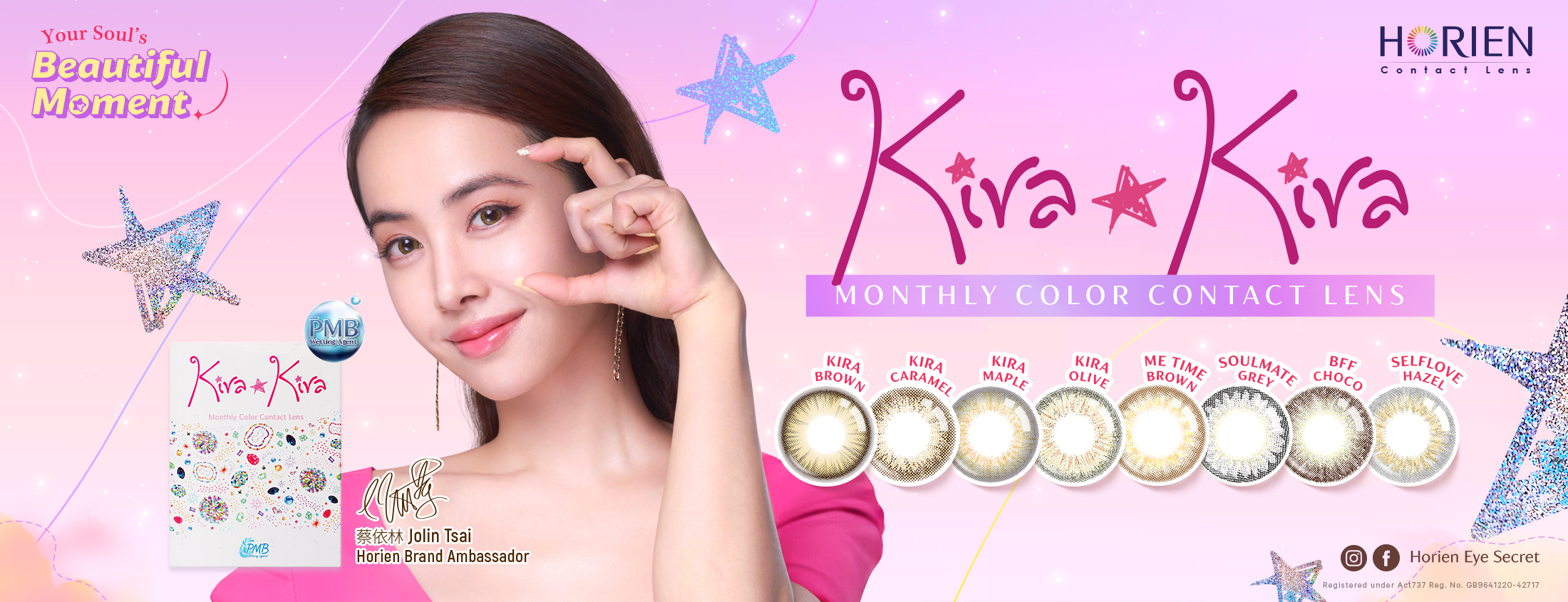


Instruction of Use
To condition, wear and remove lenses, complete these following steps.
Wearing Contact Lens
Step 1: Thoroughly wash and dry your hands with soap and a clean towel.
Step 2: Rinse your lens with solution to remove any trace of debris. l Tip: To avoid mixing up your lenses, always apply and remove the lens for your RIGHT eye first.
Step 3: Place the lens on the top of your index finger. Be sure the lens is correctly oriented by checking the inside-out marker.
Step 4: Use your other hand to hold your upper eyelid so you won’t blink.
Step 5: Pull down your lower eyelid with the other fingers of your applying hand.
Step 6: Look up at the ceiling and gently place the lens on the lower part of your eye.
Step 7: Slowly release your eyelid and close your eye for a moment.
Step 8: Blink several times to center the lens. You’re all set.
Step 9: If your lens feels uncomfortable, remove it and inspect for damage or debris. If it’s damaged, discard it. Otherwise, rinse with more solution and reapply.
Removing Contact Lens
Step 1: Thoroughly wash and dry your hands with soap and a clean towel.
Step 2: Look up at the ceiling and pull down your lower eye lid. l Tip: To avoid mixing up your lenses, always apply (and remove) them in the same order.
Step 3: Bring your index finger close to your eye until you touch the lower edge of the lens.
Step 4: Slide the lens down to the lower white part of your eye.
Step 5: Gently squeeze the lens between your thumb and index finger and remove it.
Step 6: Remove the other lens following the same procedure.
Contraindications (reasons not to use)
Do not use the lens when any of the following conditions exist:
- Acute and subacute inflammation or infection of the anterior chamber of the eye.
- Any eye disease, injury, or abnormality that affects the cornea, conjunctiva, or eyelids.
- Severe insufficiency of lacrimal secretion (dry eyes). l Corneal hypoesthesia (reduced corneal sensitivity), if not aphakic.
- Any systemic disease that may affect the eye or be exaggerated by wearing contact lenses. l Allergic reactions of ocular surfaces or adnexa that may be induced or exaggerated by wearing contact lenses or use of contact lens solutions.
- Allergy to any ingredient, such as mercury or thimerosal, in a solution, which is to be used to care for any lens.
- Any active corneal infection (bacterial, fungal, or viral). If eyes become red or irritated.
WarningsPatients should be advised of the following warnings pertaining to contact lens wear:
- Problems with contact lenses and lens care products could result in serious injury to the eye. It is essential that patients follow their eye care professional’s directions and all labelling instructions for proper use of lenses and lens care products, including the lens case.
- Eye problems, including corneal ulcers can develop rapidly and lead to loss of vision. The risk of ulcerative keratitis has been shown to be greater among users of extended wear contact lenses than among users of daily wear contact lenses. The risk increases with the number of consecutive days that the lenses are worn between removals, even with the first overnight use.
- Daily wear lenses are not indicated for overnight wear and patients should be instructed not to wear lenses while sleeping.
- Studies have shown that contact lens wearers who are smokers have a higher incidence of adverse reactions than nonsmokers.
- If a patient experiences eye discomfort, excessive tearing, vision changes, or redness of the eye, the patient should be instructed to immediately remove the lenses and promptly contact his or her eye care professional.
PrecautionsSpecial Precautions for Eye Care Practitioners
- The eye care practitioner should consider all characteristics of the lens that can affect lens performance and ocular health, including oxygen permeability, wettability, central and peripheral thickness, and optic zone diameter.
- The potential impact of these factors on the patient’s ocular health should be carefully weighed against the patient’s need for refractive correction; therefore, the continuing ocular health of the patient and lens performance on the eye should be carefully monitored by the prescribing eye care practitioner.
- Aphakic patients should not be fitted with any contact lenses until the determination is made that the eye has healed completely.
- Fluorescein, a yellow dye, should not be used while the lenses are on the eyes. The lenses absorb the dye and become discolored. Whenever fluorescein is used in the eyes, the eyes should be flushed with a sterile saline solution that is recommended for in-eye use.
- Before leaving the eye care practitioner’s office, the patient should be able to promptly remove the lenses or should have someone else available who can remove the lenses for him or her. Eye care practitioners should instruct the patient to remove the lenses immediately if the eye becomes red or irritated.
-
Starshine 1Month Color Contact Lens 1pc / box
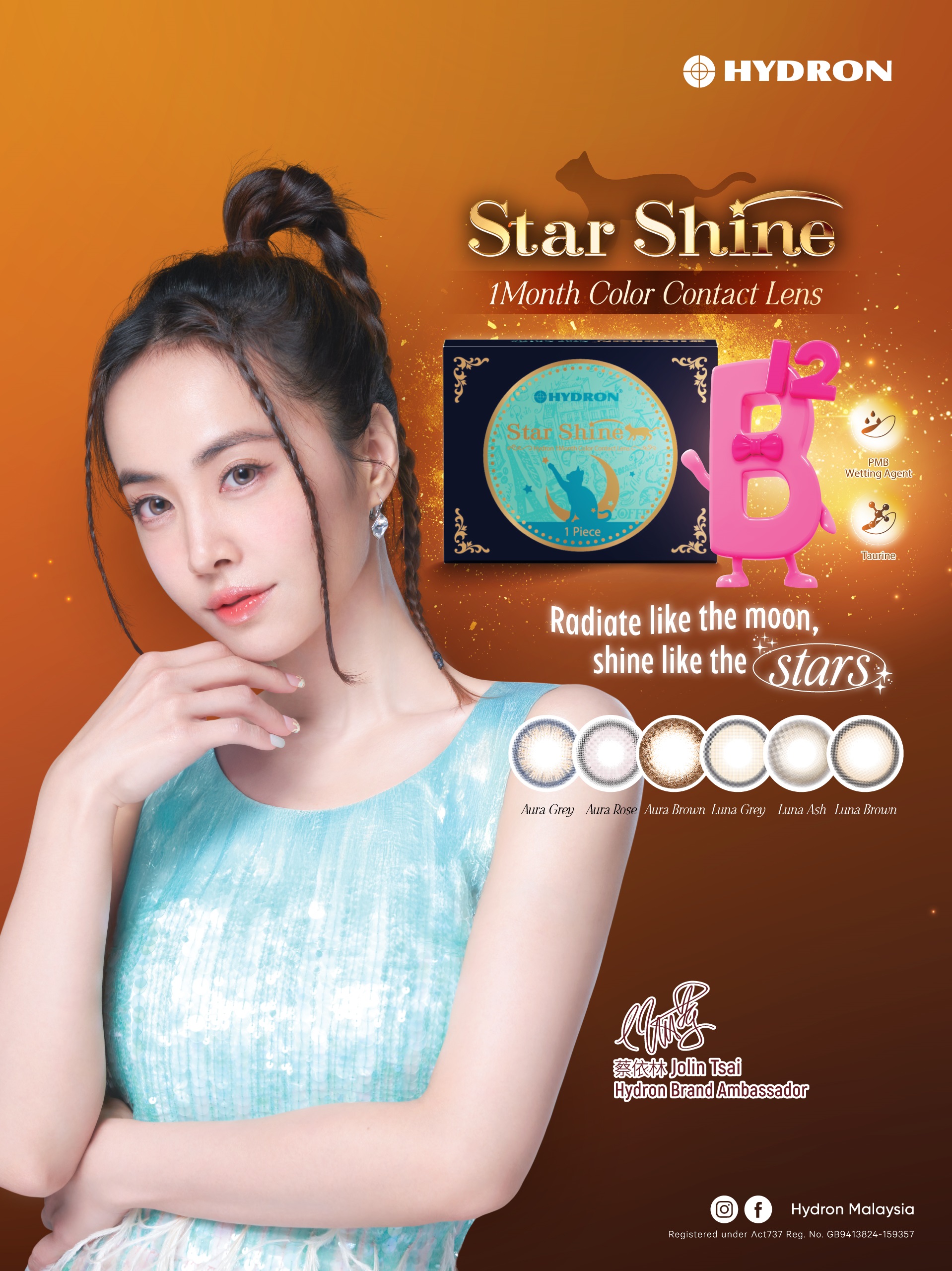
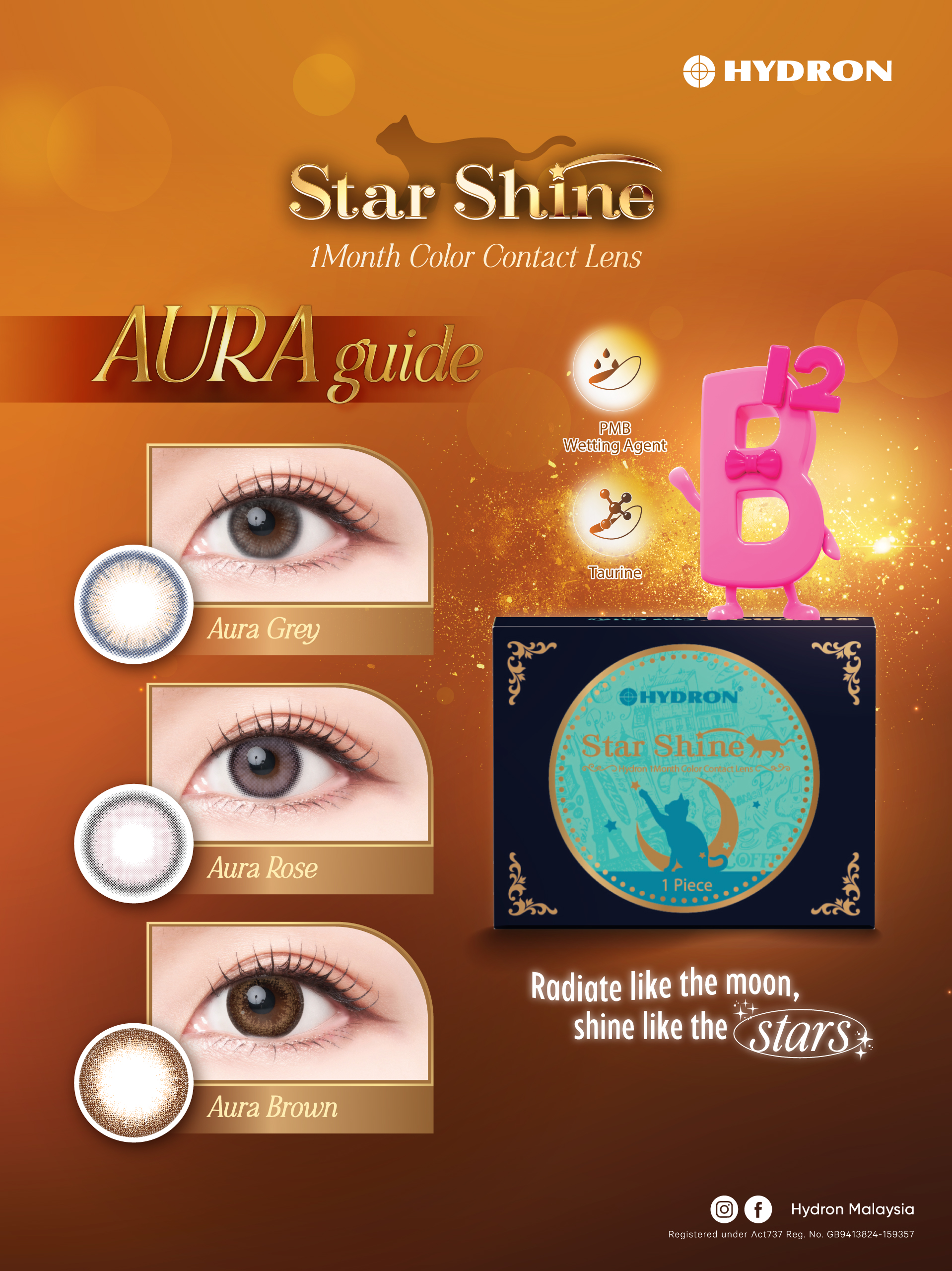
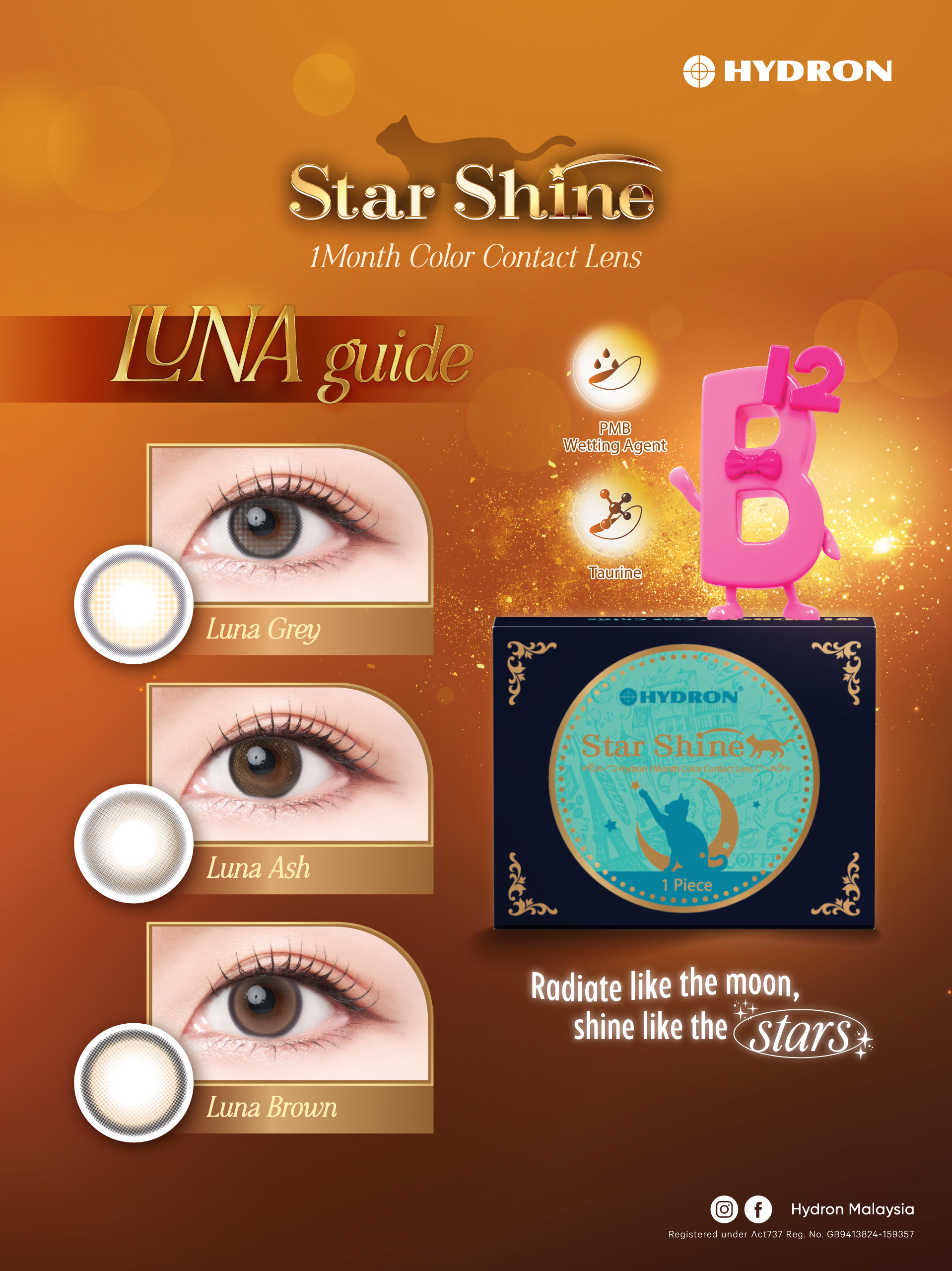
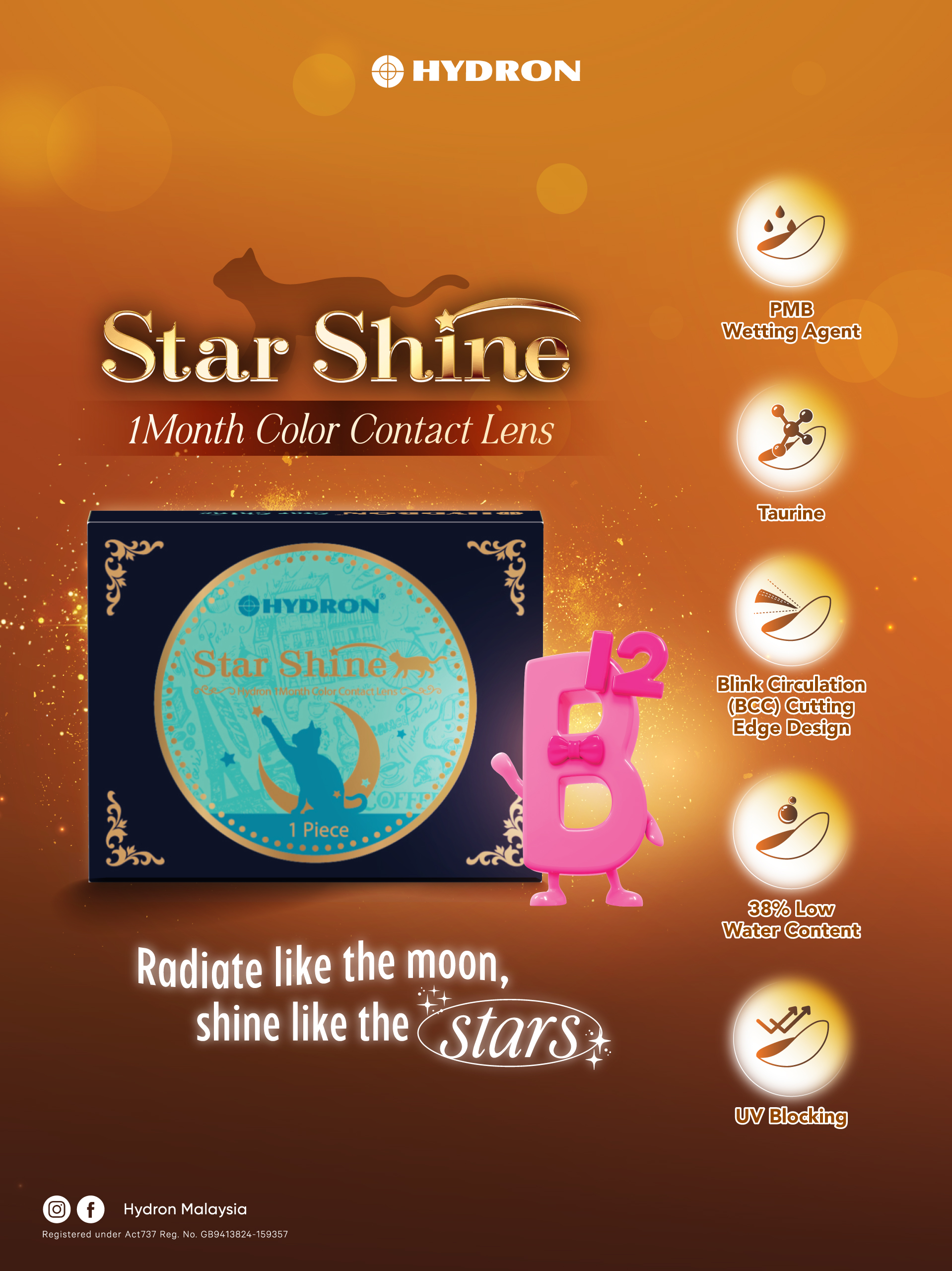
Instruction of Use
To condition, wear and remove lenses, complete these following steps.
Wearing Contact Lens
Step 1: Thoroughly wash and dry your hands with soap and a clean towel.
Step 2: Rinse your lens with solution to remove any trace of debris. l Tip: To avoid mixing up your lenses, always apply and remove the lens for your RIGHT eye first.
Step 3: Place the lens on the top of your index finger. Be sure the lens is correctly oriented by checking the inside-out marker.
Step 4: Use your other hand to hold your upper eyelid so you won’t blink.
Step 5: Pull down your lower eyelid with the other fingers of your applying hand.
Step 6: Look up at the ceiling and gently place the lens on the lower part of your eye.
Step 7: Slowly release your eyelid and close your eye for a moment.
Step 8: Blink several times to center the lens. You’re all set.
Step 9: If your lens feels uncomfortable, remove it and inspect for damage or debris. If it’s damaged, discard it. Otherwise, rinse with more solution and reapply.
Removing Contact Lens
Step 1: Thoroughly wash and dry your hands with soap and a clean towel.
Step 2: Look up at the ceiling and pull down your lower eye lid. l Tip: To avoid mixing up your lenses, always apply (and remove) them in the same order.
Step 3: Bring your index finger close to your eye until you touch the lower edge of the lens.
Step 4: Slide the lens down to the lower white part of your eye.
Step 5: Gently squeeze the lens between your thumb and index finger and remove it.
Step 6: Remove the other lens following the same procedure.
Contraindications (reasons not to use)
Do not use the lens when any of the following conditions exist:
- Acute and subacute inflammation or infection of the anterior chamber of the eye.
- Any eye disease, injury, or abnormality that affects the cornea, conjunctiva, or eyelids.
- Severe insufficiency of lacrimal secretion (dry eyes). l Corneal hypoesthesia (reduced corneal sensitivity), if not aphakic.
- Any systemic disease that may affect the eye or be exaggerated by wearing contact lenses. l Allergic reactions of ocular surfaces or adnexa that may be induced or exaggerated by wearing contact lenses or use of contact lens solutions.
- Allergy to any ingredient, such as mercury or thimerosal, in a solution, which is to be used to care for any lens.
- Any active corneal infection (bacterial, fungal, or viral). If eyes become red or irritated.
WarningsPatients should be advised of the following warnings pertaining to contact lens wear:
- Problems with contact lenses and lens care products could result in serious injury to the eye. It is essential that patients follow their eye care professional’s directions and all labelling instructions for proper use of lenses and lens care products, including the lens case.
- Eye problems, including corneal ulcers can develop rapidly and lead to loss of vision. The risk of ulcerative keratitis has been shown to be greater among users of extended wear contact lenses than among users of daily wear contact lenses. The risk increases with the number of consecutive days that the lenses are worn between removals, even with the first overnight use.
- Daily wear lenses are not indicated for overnight wear and patients should be instructed not to wear lenses while sleeping.
- Studies have shown that contact lens wearers who are smokers have a higher incidence of adverse reactions than nonsmokers.
- If a patient experiences eye discomfort, excessive tearing, vision changes, or redness of the eye, the patient should be instructed to immediately remove the lenses and promptly contact his or her eye care professional.
PrecautionsSpecial Precautions for Eye Care Practitioners
- The eye care practitioner should consider all characteristics of the lens that can affect lens performance and ocular health, including oxygen permeability, wettability, central and peripheral thickness, and optic zone diameter.
- The potential impact of these factors on the patient’s ocular health should be carefully weighed against the patient’s need for refractive correction; therefore, the continuing ocular health of the patient and lens performance on the eye should be carefully monitored by the prescribing eye care practitioner.
- Aphakic patients should not be fitted with any contact lenses until the determination is made that the eye has healed completely.
- Fluorescein, a yellow dye, should not be used while the lenses are on the eyes. The lenses absorb the dye and become discolored. Whenever fluorescein is used in the eyes, the eyes should be flushed with a sterile saline solution that is recommended for in-eye use.
- Before leaving the eye care practitioner’s office, the patient should be able to promptly remove the lenses or should have someone else available who can remove the lenses for him or her. Eye care practitioners should instruct the patient to remove the lenses immediately if the eye becomes red or irritated.
-
38% Daily Color Contact Lenses 10pcs / box
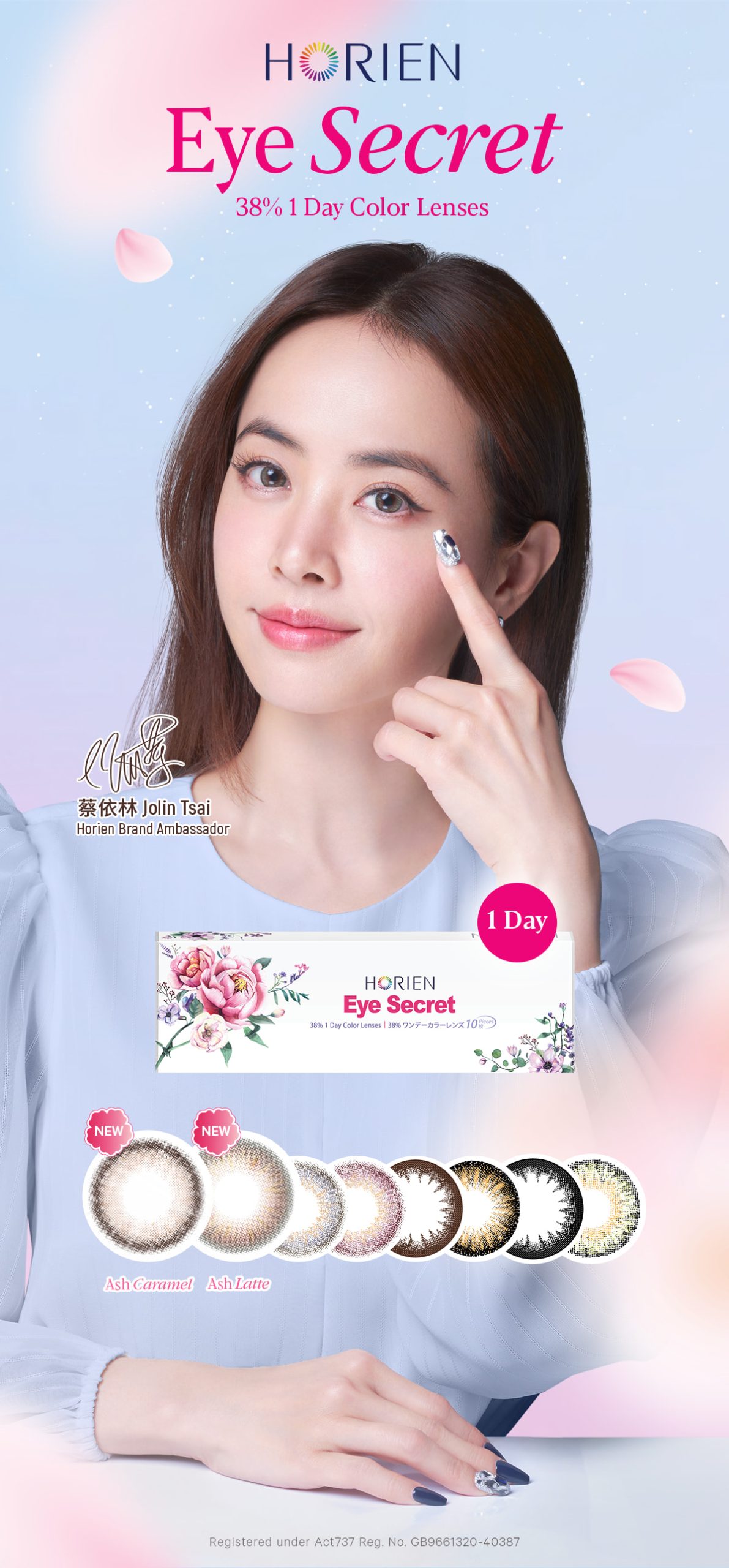

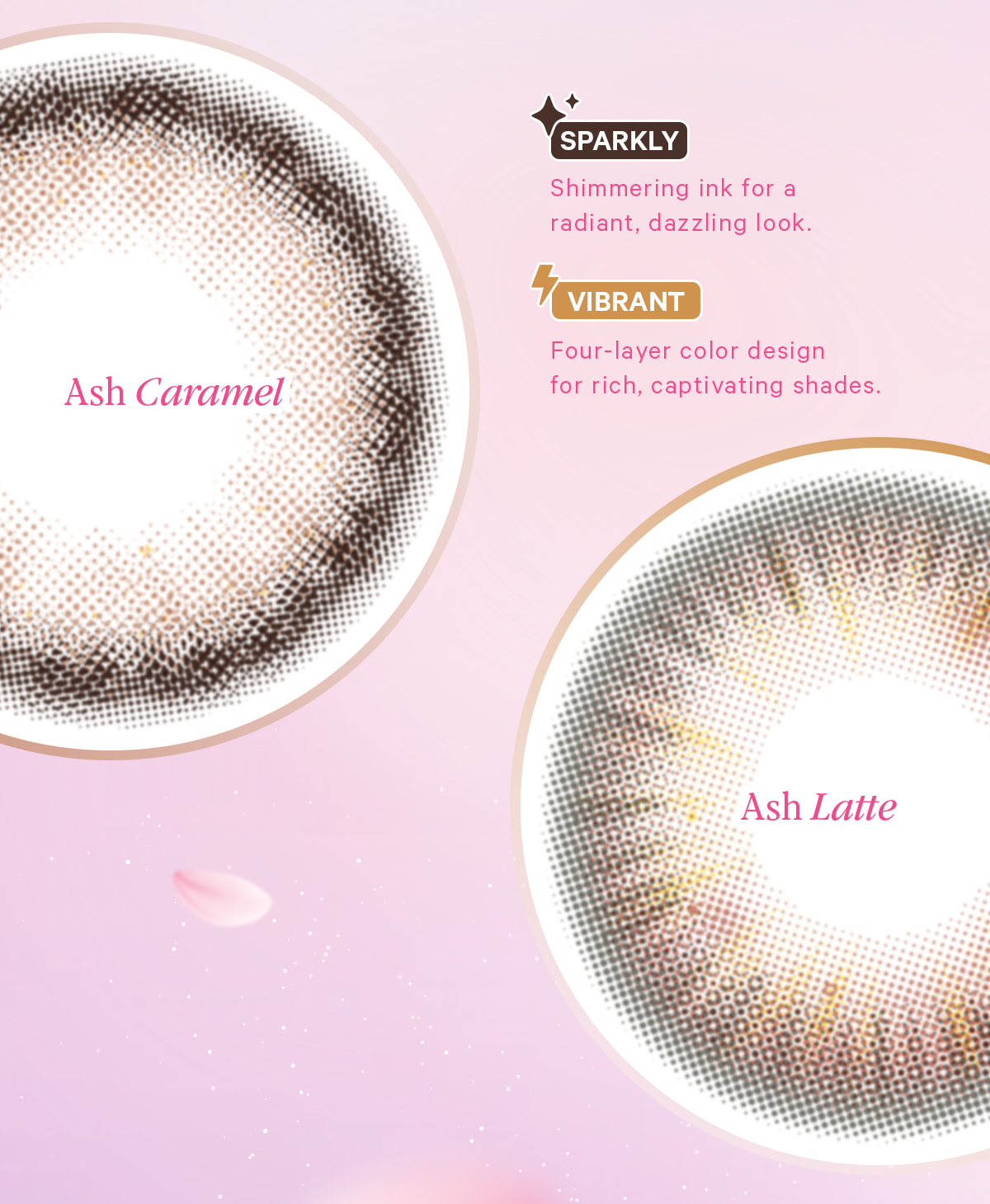


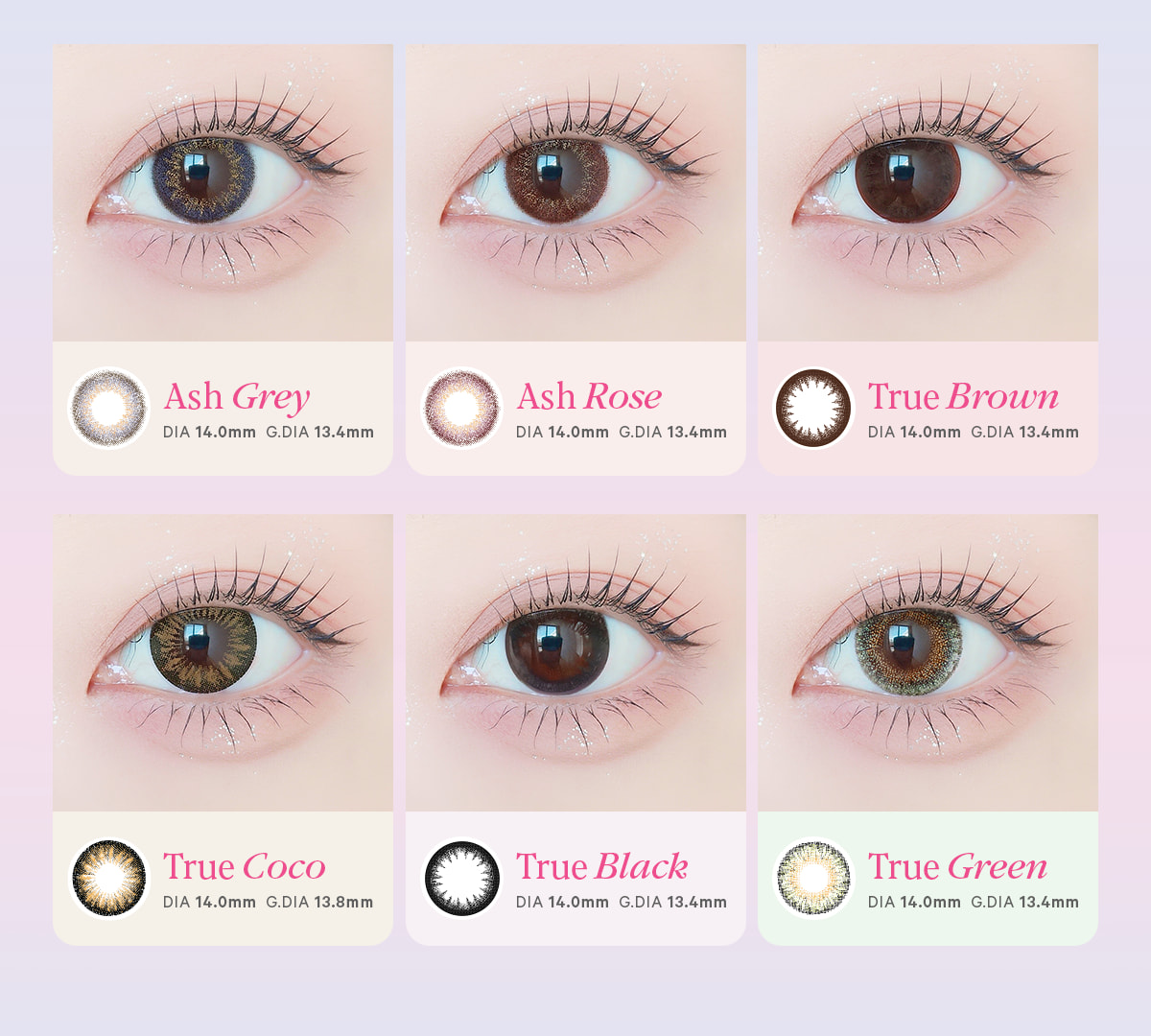
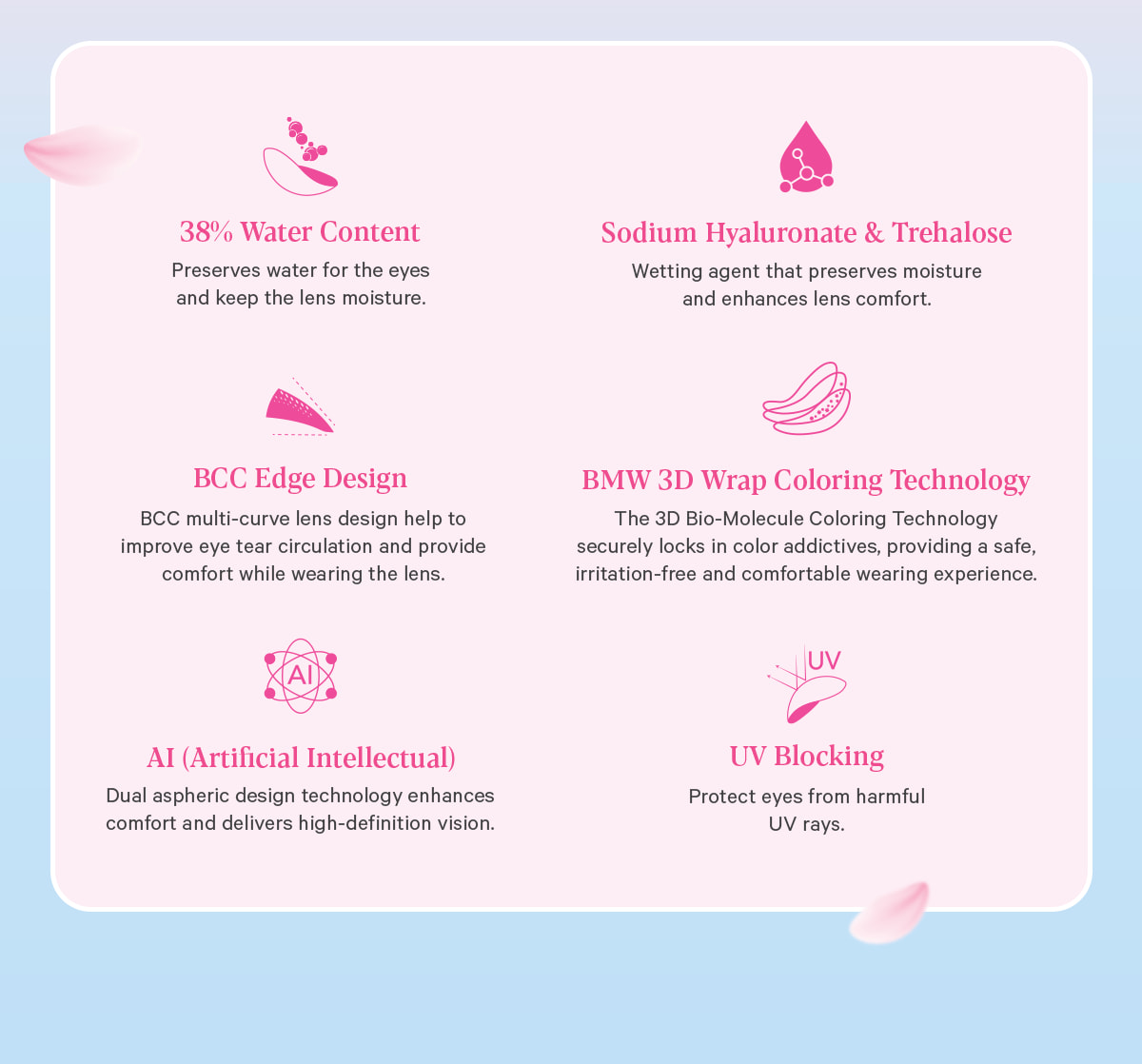
Instruction of Use
To condition, wear and remove lenses, complete these following steps.
Wearing Contact Lens
Step 1: Thoroughly wash and dry your hands with soap and a clean towel.
Step 2: Rinse your lens with solution to remove any trace of debris. l Tip: To avoid mixing up your lenses, always apply and remove the lens for your RIGHT eye first.
Step 3: Place the lens on the top of your index finger. Be sure the lens is correctly oriented by checking the inside-out marker.
Step 4: Use your other hand to hold your upper eyelid so you won’t blink.
Step 5: Pull down your lower eyelid with the other fingers of your applying hand.
Step 6: Look up at the ceiling and gently place the lens on the lower part of your eye.
Step 7: Slowly release your eyelid and close your eye for a moment.
Step 8: Blink several times to center the lens. You’re all set.
Step 9: If your lens feels uncomfortable, remove it and inspect for damage or debris. If it’s damaged, discard it. Otherwise, rinse with more solution and reapply.
Removing Contact Lens
Step 1: Thoroughly wash and dry your hands with soap and a clean towel.
Step 2: Look up at the ceiling and pull down your lower eye lid. l Tip: To avoid mixing up your lenses, always apply (and remove) them in the same order.
Step 3: Bring your index finger close to your eye until you touch the lower edge of the lens.
Step 4: Slide the lens down to the lower white part of your eye.
Step 5: Gently squeeze the lens between your thumb and index finger and remove it.
Step 6: Remove the other lens following the same procedure.
Contraindications (reasons not to use)
Do not use the lens when any of the following conditions exist:
- Acute and subacute inflammation or infection of the anterior chamber of the eye.
- Any eye disease, injury, or abnormality that affects the cornea, conjunctiva, or eyelids.
- Severe insufficiency of lacrimal secretion (dry eyes). l Corneal hypoesthesia (reduced corneal sensitivity), if not aphakic.
- Any systemic disease that may affect the eye or be exaggerated by wearing contact lenses. l Allergic reactions of ocular surfaces or adnexa that may be induced or exaggerated by wearing contact lenses or use of contact lens solutions.
- Allergy to any ingredient, such as mercury or thimerosal, in a solution, which is to be used to care for any lens.
- Any active corneal infection (bacterial, fungal, or viral). If eyes become red or irritated.
WarningsPatients should be advised of the following warnings pertaining to contact lens wear:
- Problems with contact lenses and lens care products could result in serious injury to the eye. It is essential that patients follow their eye care professional’s directions and all labelling instructions for proper use of lenses and lens care products, including the lens case.
- Eye problems, including corneal ulcers can develop rapidly and lead to loss of vision. The risk of ulcerative keratitis has been shown to be greater among users of extended wear contact lenses than among users of daily wear contact lenses. The risk increases with the number of consecutive days that the lenses are worn between removals, even with the first overnight use.
- Daily wear lenses are not indicated for overnight wear and patients should be instructed not to wear lenses while sleeping.
- Studies have shown that contact lens wearers who are smokers have a higher incidence of adverse reactions than nonsmokers.
- If a patient experiences eye discomfort, excessive tearing, vision changes, or redness of the eye, the patient should be instructed to immediately remove the lenses and promptly contact his or her eye care professional.
PrecautionsSpecial Precautions for Eye Care Practitioners
- The eye care practitioner should consider all characteristics of the lens that can affect lens performance and ocular health, including oxygen permeability, wettability, central and peripheral thickness, and optic zone diameter.
- The potential impact of these factors on the patient’s ocular health should be carefully weighed against the patient’s need for refractive correction; therefore, the continuing ocular health of the patient and lens performance on the eye should be carefully monitored by the prescribing eye care practitioner.
- Aphakic patients should not be fitted with any contact lenses until the determination is made that the eye has healed completely.
- Fluorescein, a yellow dye, should not be used while the lenses are on the eyes. The lenses absorb the dye and become discolored. Whenever fluorescein is used in the eyes, the eyes should be flushed with a sterile saline solution that is recommended for in-eye use.
- Before leaving the eye care practitioner’s office, the patient should be able to promptly remove the lenses or should have someone else available who can remove the lenses for him or her. Eye care practitioners should instruct the patient to remove the lenses immediately if the eye becomes red or irritated.
-
38% Monthly Color Contact Lenses 1pc / box

Instruction of Use
To condition, wear and remove lenses, complete these following steps.
Wearing Contact Lens
Step 1: Thoroughly wash and dry your hands with soap and a clean towel.
Step 2: Rinse your lens with solution to remove any trace of debris. l Tip: To avoid mixing up your lenses, always apply and remove the lens for your RIGHT eye first.
Step 3: Place the lens on the top of your index finger. Be sure the lens is correctly oriented by checking the inside-out marker.
Step 4: Use your other hand to hold your upper eyelid so you won’t blink.
Step 5: Pull down your lower eyelid with the other fingers of your applying hand.
Step 6: Look up at the ceiling and gently place the lens on the lower part of your eye.
Step 7: Slowly release your eyelid and close your eye for a moment.
Step 8: Blink several times to center the lens. You’re all set.
Step 9: If your lens feels uncomfortable, remove it and inspect for damage or debris. If it’s damaged, discard it. Otherwise, rinse with more solution and reapply.
Removing Contact Lens
Step 1: Thoroughly wash and dry your hands with soap and a clean towel.
Step 2: Look up at the ceiling and pull down your lower eye lid. l Tip: To avoid mixing up your lenses, always apply (and remove) them in the same order.
Step 3: Bring your index finger close to your eye until you touch the lower edge of the lens.
Step 4: Slide the lens down to the lower white part of your eye.
Step 5: Gently squeeze the lens between your thumb and index finger and remove it.
Step 6: Remove the other lens following the same procedure.
Contraindications (reasons not to use)
Do not use the lens when any of the following conditions exist:
- Acute and subacute inflammation or infection of the anterior chamber of the eye.
- Any eye disease, injury, or abnormality that affects the cornea, conjunctiva, or eyelids.
- Severe insufficiency of lacrimal secretion (dry eyes). l Corneal hypoesthesia (reduced corneal sensitivity), if not aphakic.
- Any systemic disease that may affect the eye or be exaggerated by wearing contact lenses. l Allergic reactions of ocular surfaces or adnexa that may be induced or exaggerated by wearing contact lenses or use of contact lens solutions.
- Allergy to any ingredient, such as mercury or thimerosal, in a solution, which is to be used to care for any lens.
- Any active corneal infection (bacterial, fungal, or viral). If eyes become red or irritated.
WarningsPatients should be advised of the following warnings pertaining to contact lens wear:
- Problems with contact lenses and lens care products could result in serious injury to the eye. It is essential that patients follow their eye care professional’s directions and all labelling instructions for proper use of lenses and lens care products, including the lens case.
- Eye problems, including corneal ulcers can develop rapidly and lead to loss of vision. The risk of ulcerative keratitis has been shown to be greater among users of extended wear contact lenses than among users of daily wear contact lenses. The risk increases with the number of consecutive days that the lenses are worn between removals, even with the first overnight use.
- Daily wear lenses are not indicated for overnight wear and patients should be instructed not to wear lenses while sleeping.
- Studies have shown that contact lens wearers who are smokers have a higher incidence of adverse reactions than nonsmokers.
- If a patient experiences eye discomfort, excessive tearing, vision changes, or redness of the eye, the patient should be instructed to immediately remove the lenses and promptly contact his or her eye care professional.
PrecautionsSpecial Precautions for Eye Care Practitioners
- The eye care practitioner should consider all characteristics of the lens that can affect lens performance and ocular health, including oxygen permeability, wettability, central and peripheral thickness, and optic zone diameter.
- The potential impact of these factors on the patient’s ocular health should be carefully weighed against the patient’s need for refractive correction; therefore, the continuing ocular health of the patient and lens performance on the eye should be carefully monitored by the prescribing eye care practitioner.
- Aphakic patients should not be fitted with any contact lenses until the determination is made that the eye has healed completely.
- Fluorescein, a yellow dye, should not be used while the lenses are on the eyes. The lenses absorb the dye and become discolored. Whenever fluorescein is used in the eyes, the eyes should be flushed with a sterile saline solution that is recommended for in-eye use.
- Before leaving the eye care practitioner’s office, the patient should be able to promptly remove the lenses or should have someone else available who can remove the lenses for him or her. Eye care practitioners should instruct the patient to remove the lenses immediately if the eye becomes red or irritated.
-
38% 3 Months Color Contact Lenses 1pc / box

Instruction of Use
To condition, wear and remove lenses, complete these following steps.
Wearing Contact Lens
Step 1: Thoroughly wash and dry your hands with soap and a clean towel.
Step 2: Rinse your lens with solution to remove any trace of debris. l Tip: To avoid mixing up your lenses, always apply and remove the lens for your RIGHT eye first.
Step 3: Place the lens on the top of your index finger. Be sure the lens is correctly oriented by checking the inside-out marker.
Step 4: Use your other hand to hold your upper eyelid so you won’t blink.
Step 5: Pull down your lower eyelid with the other fingers of your applying hand.
Step 6: Look up at the ceiling and gently place the lens on the lower part of your eye.
Step 7: Slowly release your eyelid and close your eye for a moment.
Step 8: Blink several times to center the lens. You’re all set.
Step 9: If your lens feels uncomfortable, remove it and inspect for damage or debris. If it’s damaged, discard it. Otherwise, rinse with more solution and reapply.
Removing Contact Lens
Step 1: Thoroughly wash and dry your hands with soap and a clean towel.
Step 2: Look up at the ceiling and pull down your lower eye lid. l Tip: To avoid mixing up your lenses, always apply (and remove) them in the same order.
Step 3: Bring your index finger close to your eye until you touch the lower edge of the lens.
Step 4: Slide the lens down to the lower white part of your eye.
Step 5: Gently squeeze the lens between your thumb and index finger and remove it.
Step 6: Remove the other lens following the same procedure.
Contraindications (reasons not to use)
Do not use the lens when any of the following conditions exist:
- Acute and subacute inflammation or infection of the anterior chamber of the eye.
- Any eye disease, injury, or abnormality that affects the cornea, conjunctiva, or eyelids.
- Severe insufficiency of lacrimal secretion (dry eyes). l Corneal hypoesthesia (reduced corneal sensitivity), if not aphakic.
- Any systemic disease that may affect the eye or be exaggerated by wearing contact lenses. l Allergic reactions of ocular surfaces or adnexa that may be induced or exaggerated by wearing contact lenses or use of contact lens solutions.
- Allergy to any ingredient, such as mercury or thimerosal, in a solution, which is to be used to care for any lens.
- Any active corneal infection (bacterial, fungal, or viral). If eyes become red or irritated.
WarningsPatients should be advised of the following warnings pertaining to contact lens wear:
- Problems with contact lenses and lens care products could result in serious injury to the eye. It is essential that patients follow their eye care professional’s directions and all labelling instructions for proper use of lenses and lens care products, including the lens case.
- Eye problems, including corneal ulcers can develop rapidly and lead to loss of vision. The risk of ulcerative keratitis has been shown to be greater among users of extended wear contact lenses than among users of daily wear contact lenses. The risk increases with the number of consecutive days that the lenses are worn between removals, even with the first overnight use.
- Daily wear lenses are not indicated for overnight wear and patients should be instructed not to wear lenses while sleeping.
- Studies have shown that contact lens wearers who are smokers have a higher incidence of adverse reactions than nonsmokers.
- If a patient experiences eye discomfort, excessive tearing, vision changes, or redness of the eye, the patient should be instructed to immediately remove the lenses and promptly contact his or her eye care professional.
PrecautionsSpecial Precautions for Eye Care Practitioners
- The eye care practitioner should consider all characteristics of the lens that can affect lens performance and ocular health, including oxygen permeability, wettability, central and peripheral thickness, and optic zone diameter.
- The potential impact of these factors on the patient’s ocular health should be carefully weighed against the patient’s need for refractive correction; therefore, the continuing ocular health of the patient and lens performance on the eye should be carefully monitored by the prescribing eye care practitioner.
- Aphakic patients should not be fitted with any contact lenses until the determination is made that the eye has healed completely.
- Fluorescein, a yellow dye, should not be used while the lenses are on the eyes. The lenses absorb the dye and become discolored. Whenever fluorescein is used in the eyes, the eyes should be flushed with a sterile saline solution that is recommended for in-eye use.
- Before leaving the eye care practitioner’s office, the patient should be able to promptly remove the lenses or should have someone else available who can remove the lenses for him or her. Eye care practitioners should instruct the patient to remove the lenses immediately if the eye becomes red or irritated.


